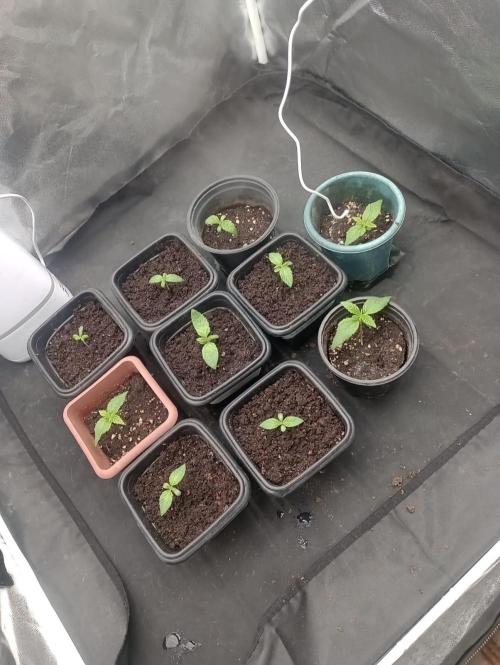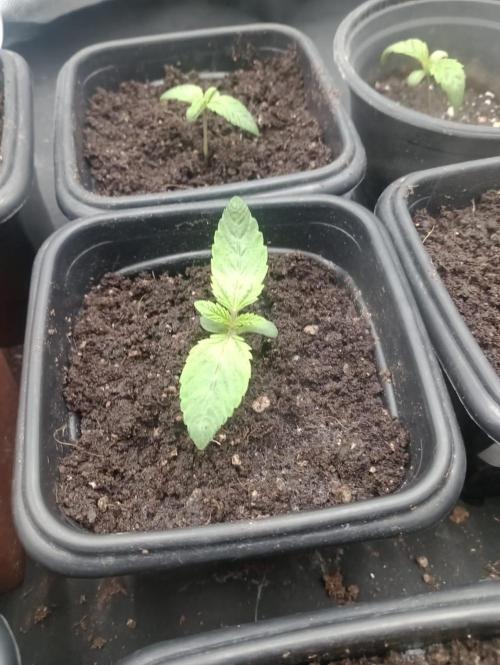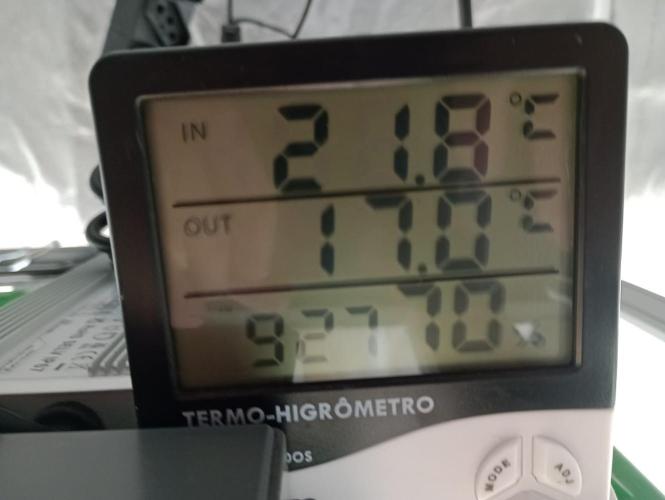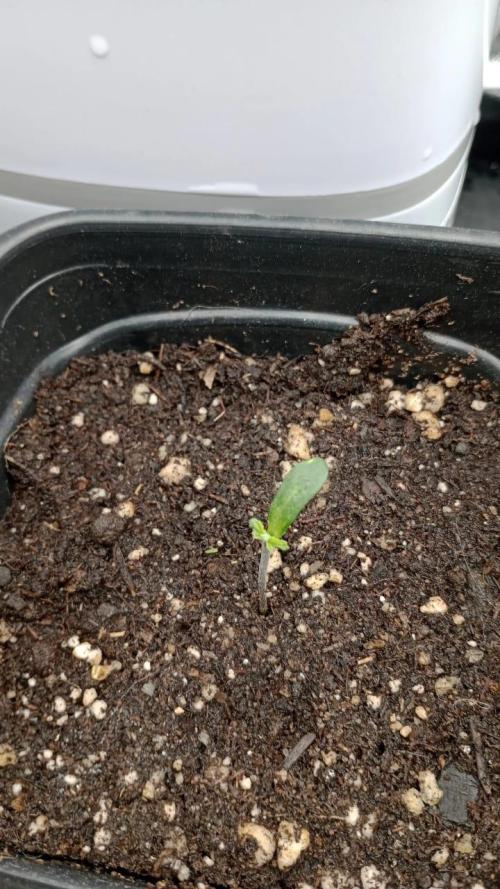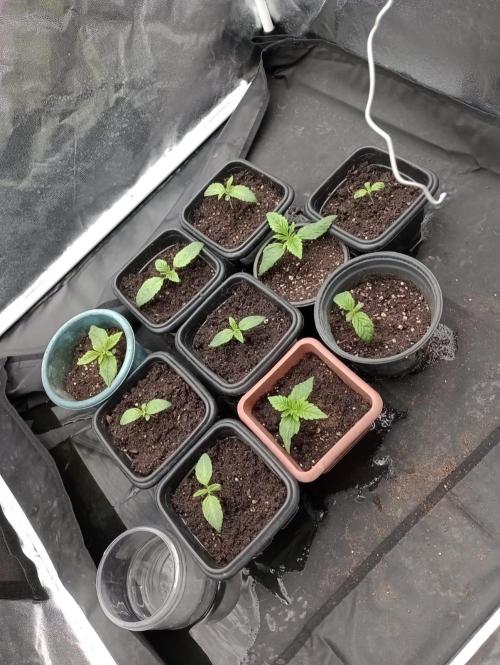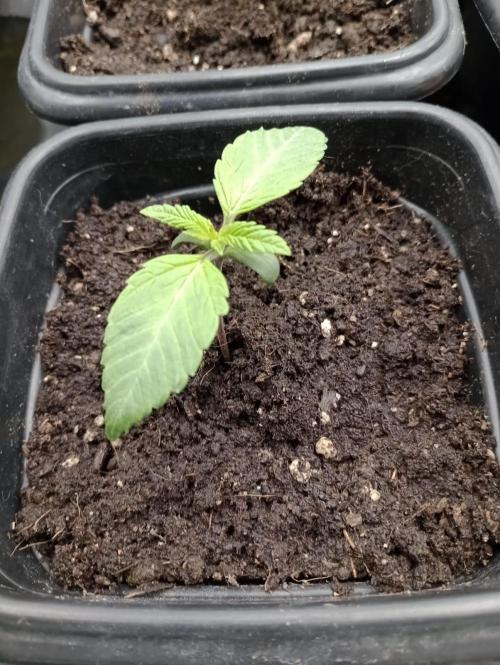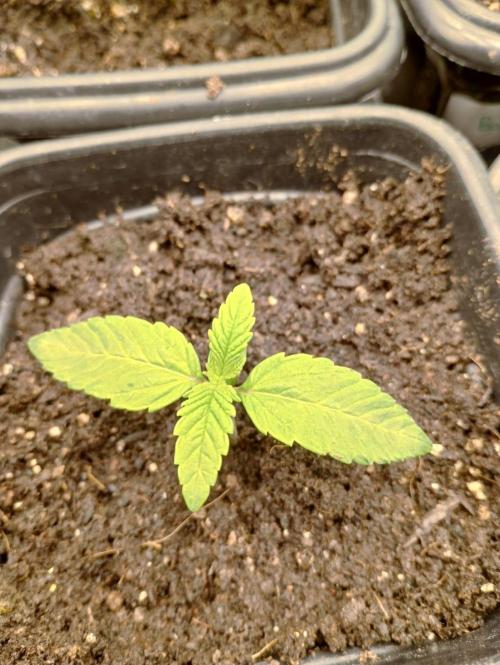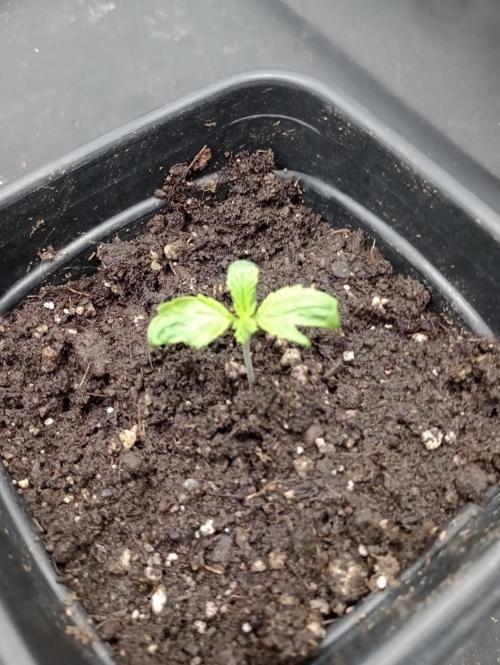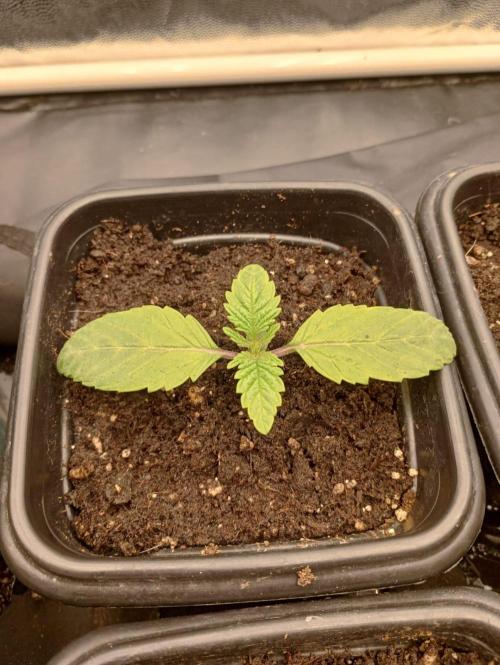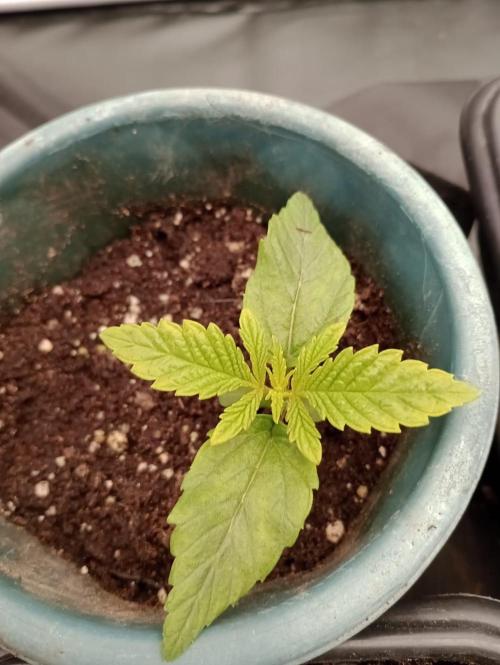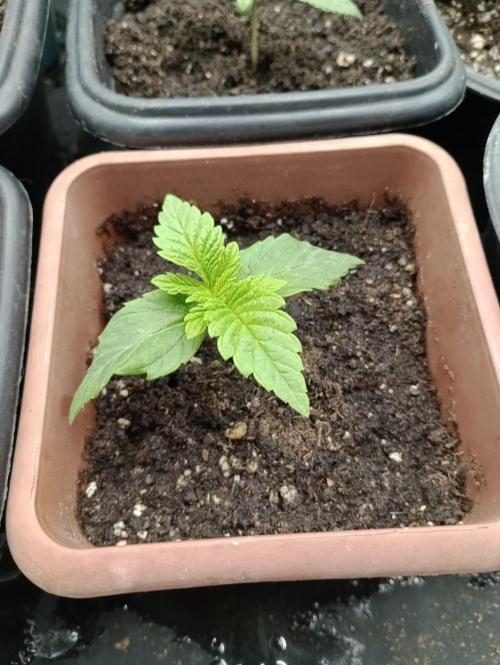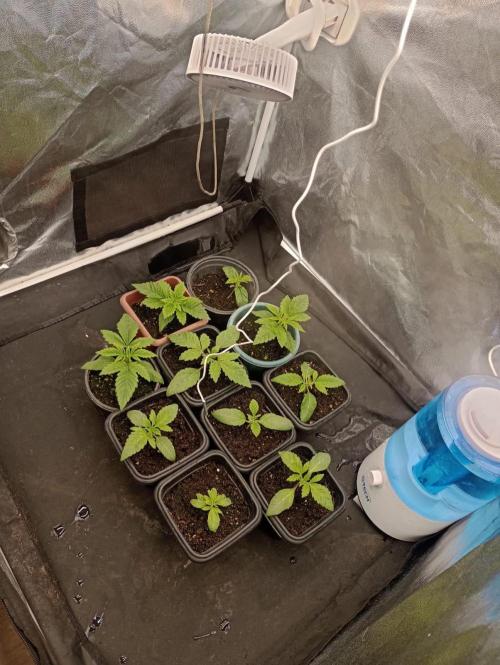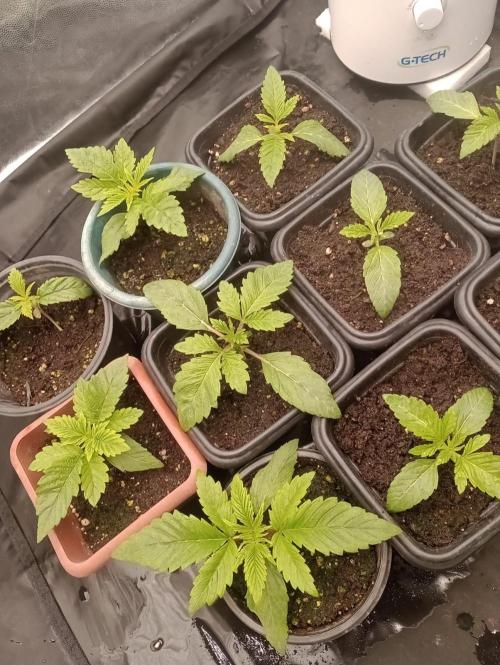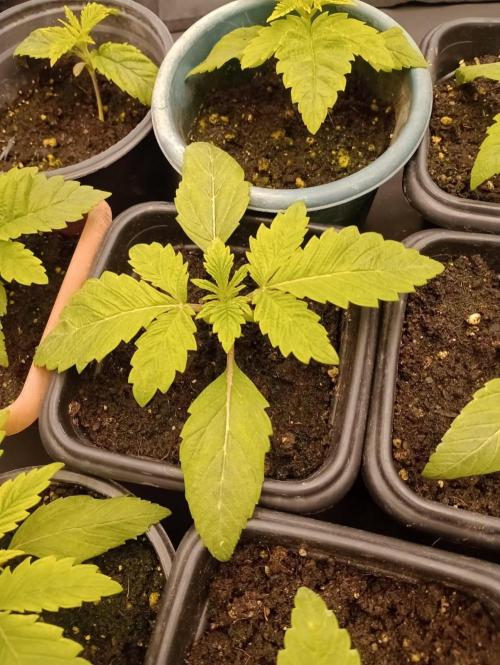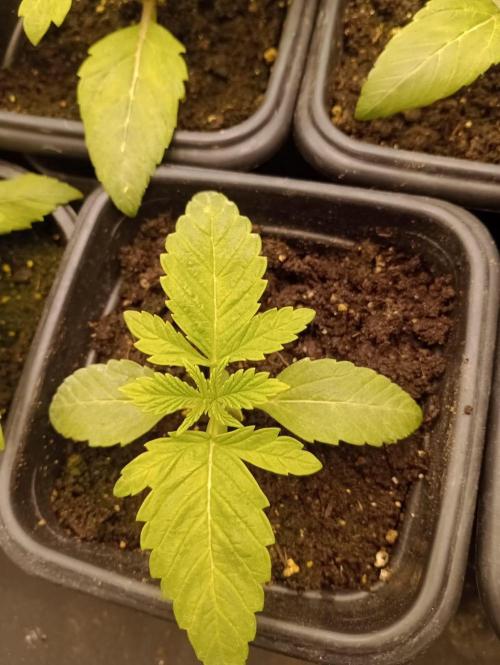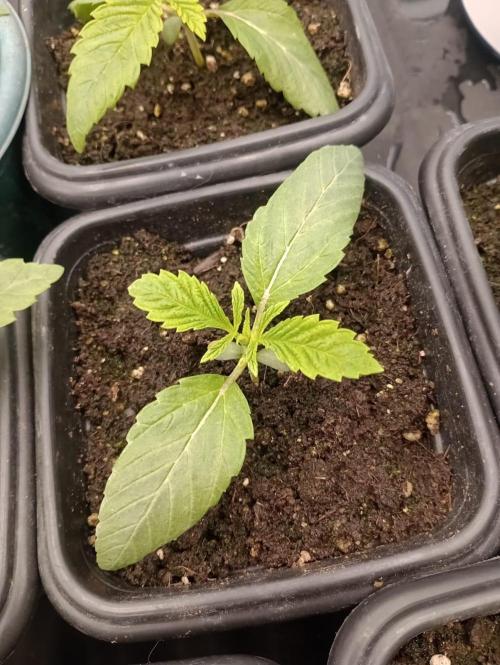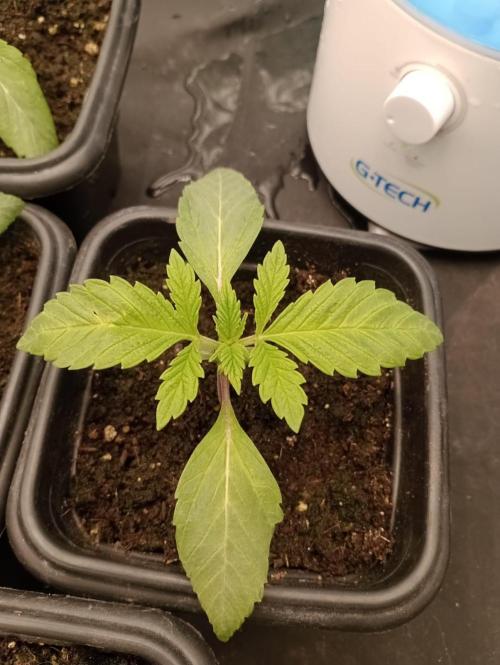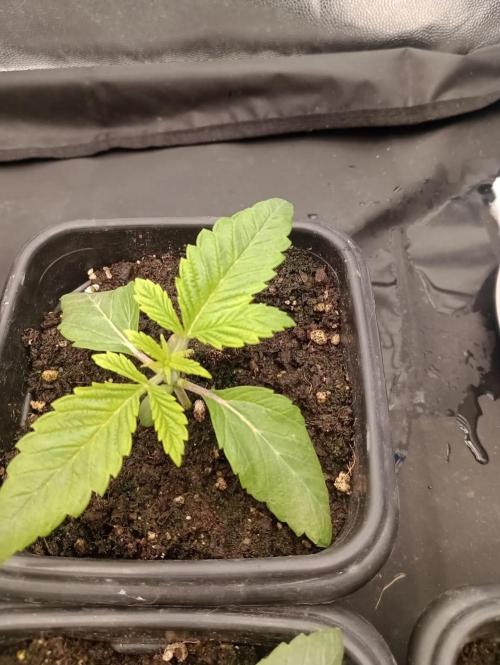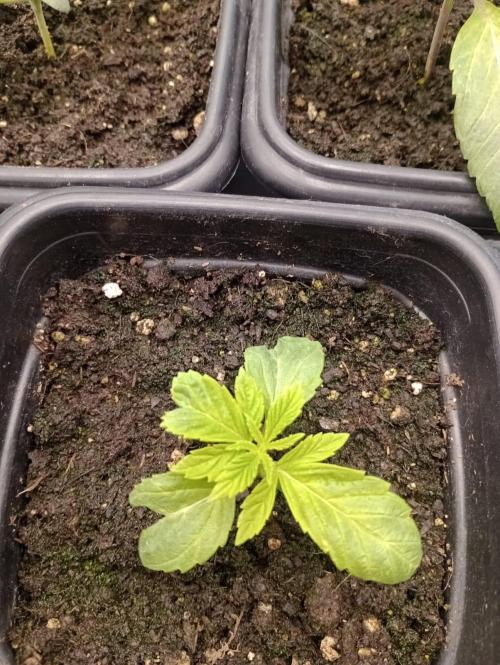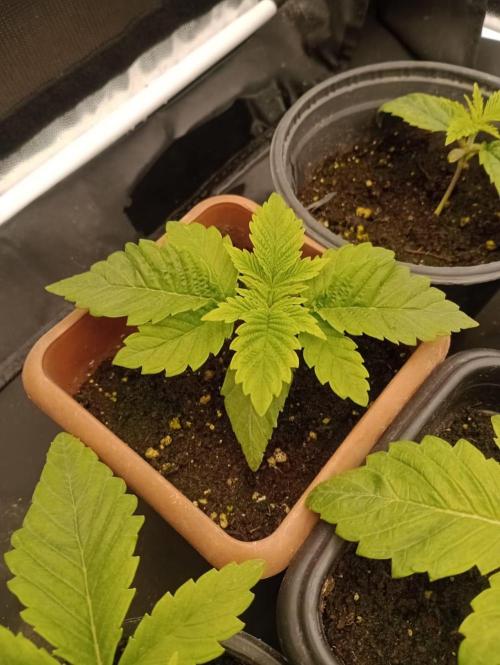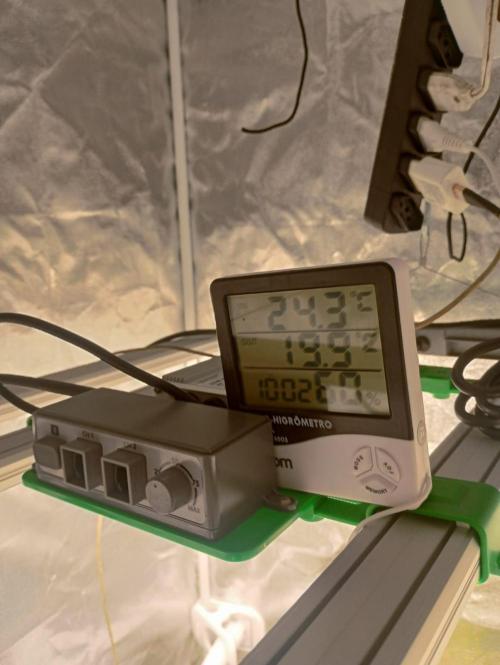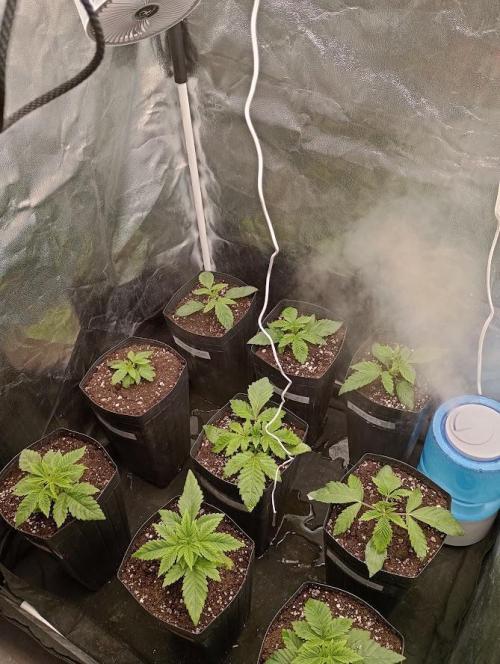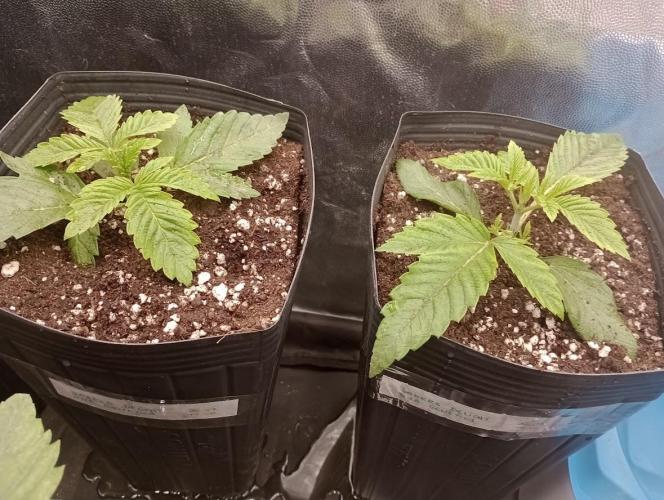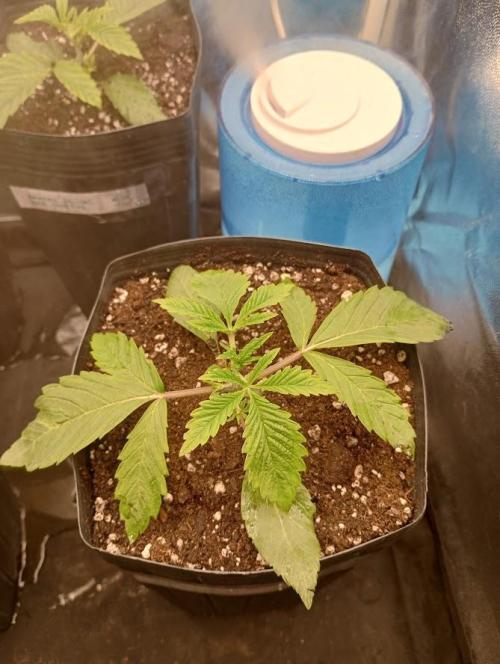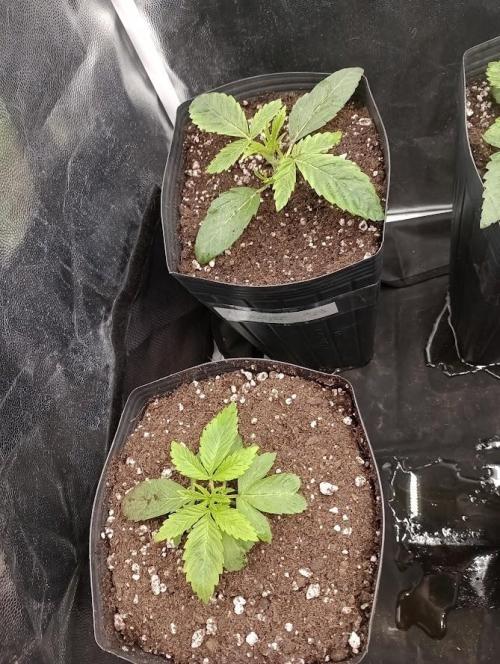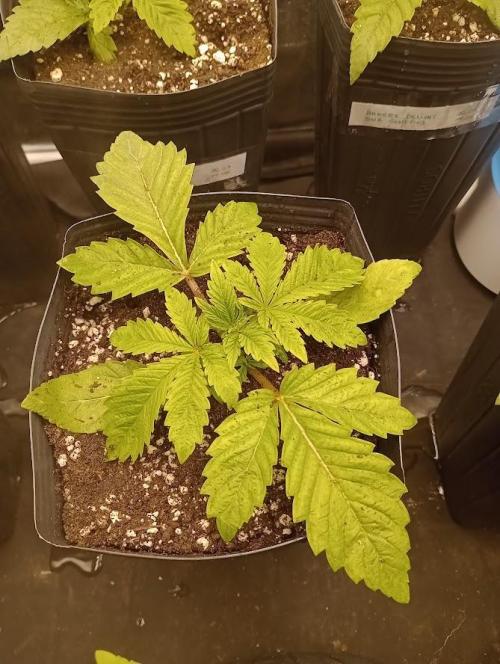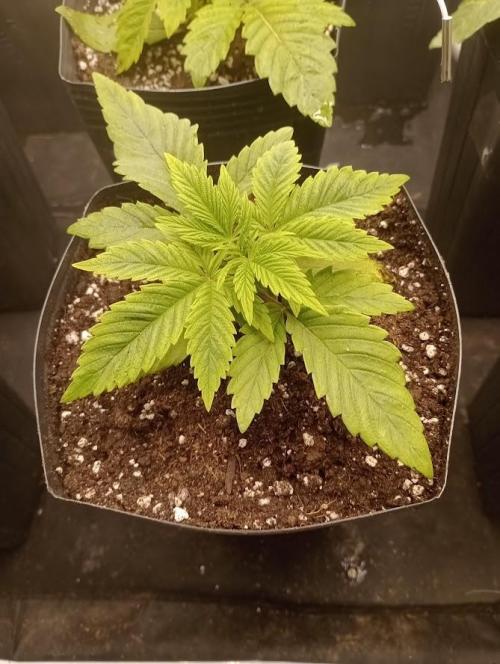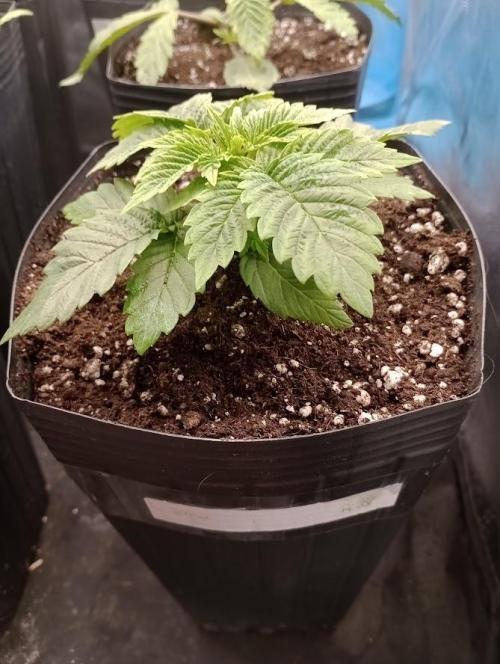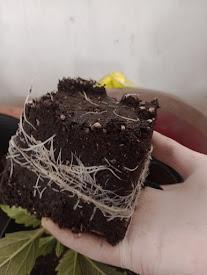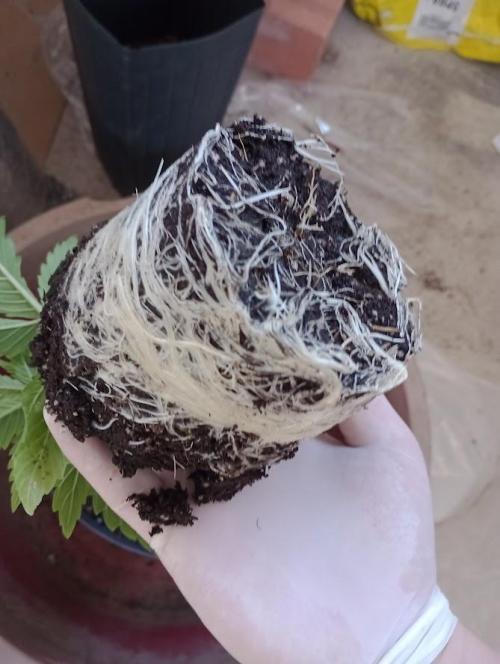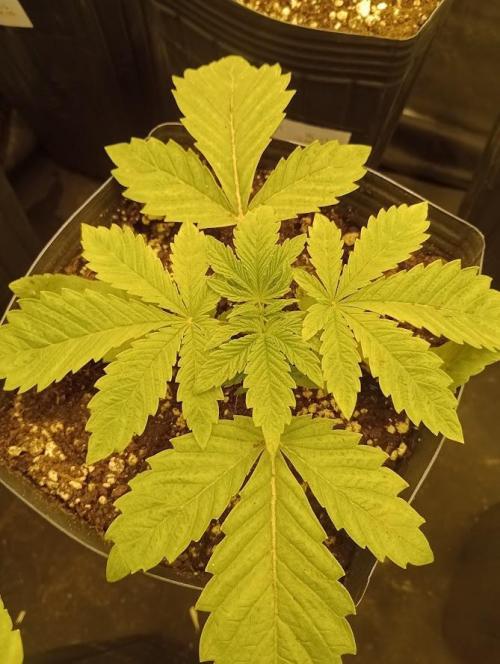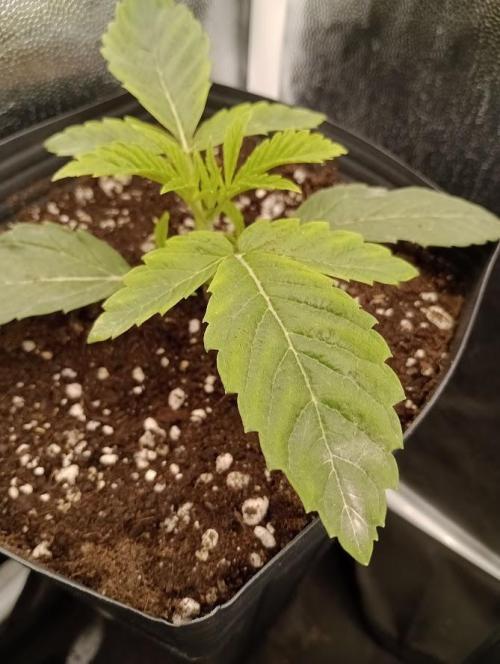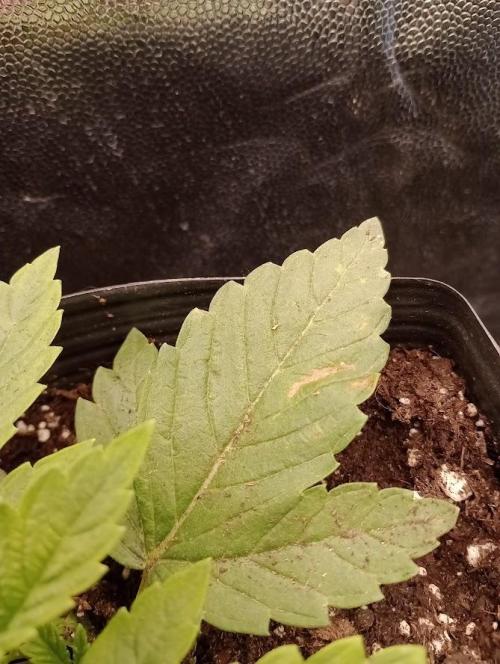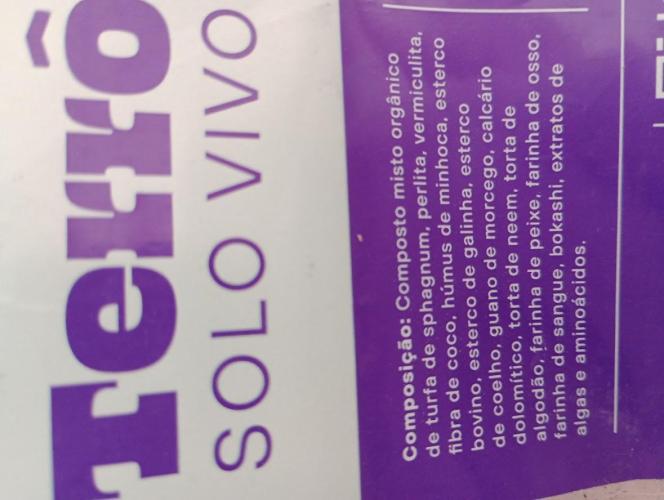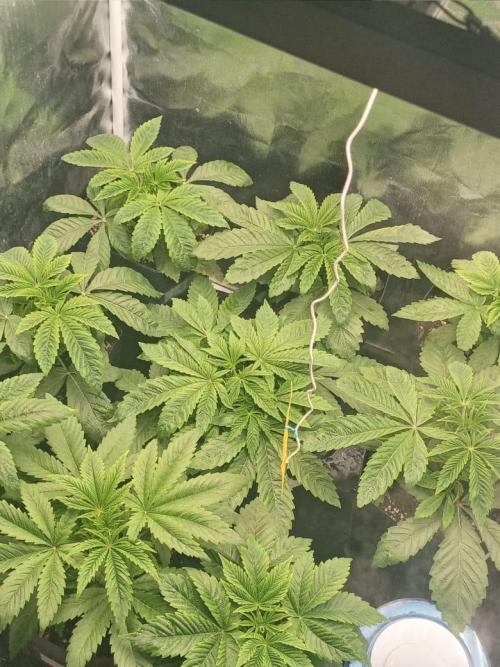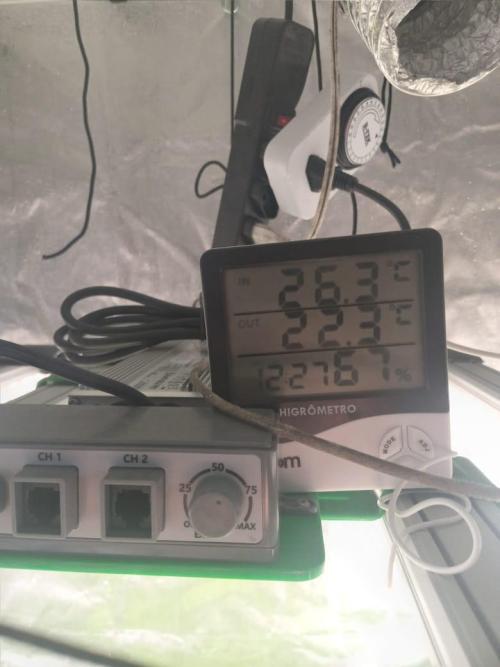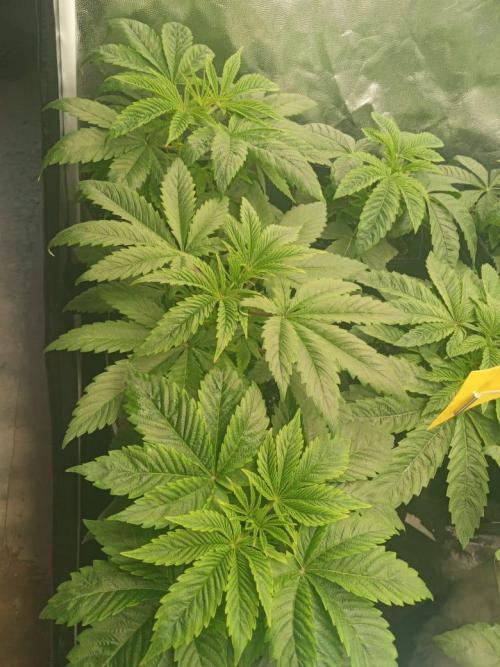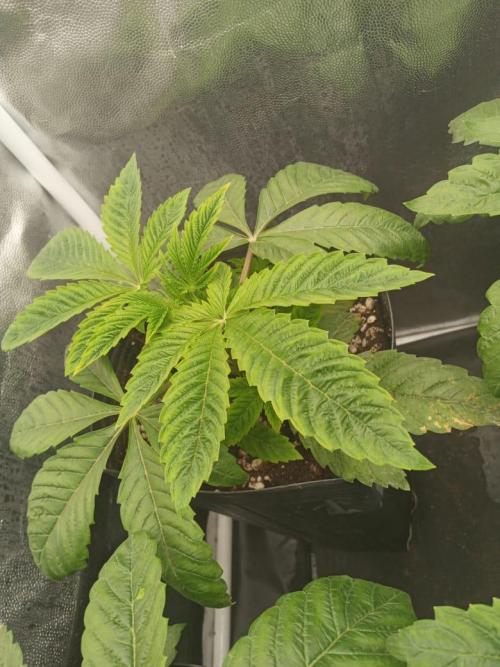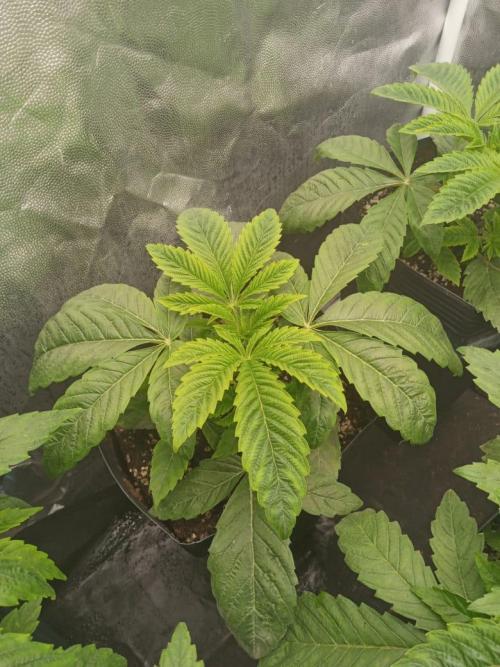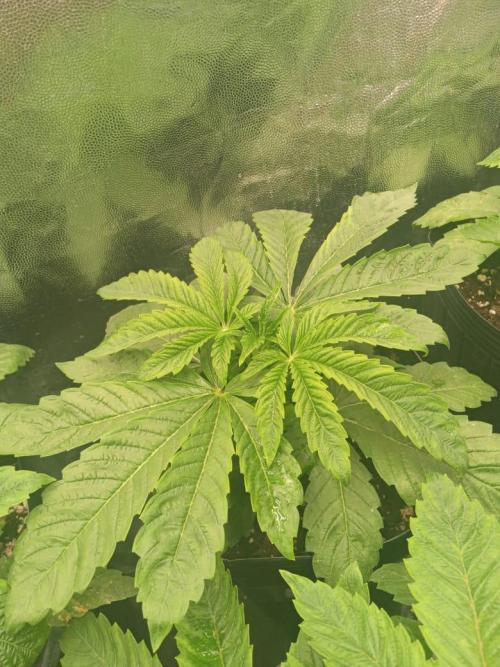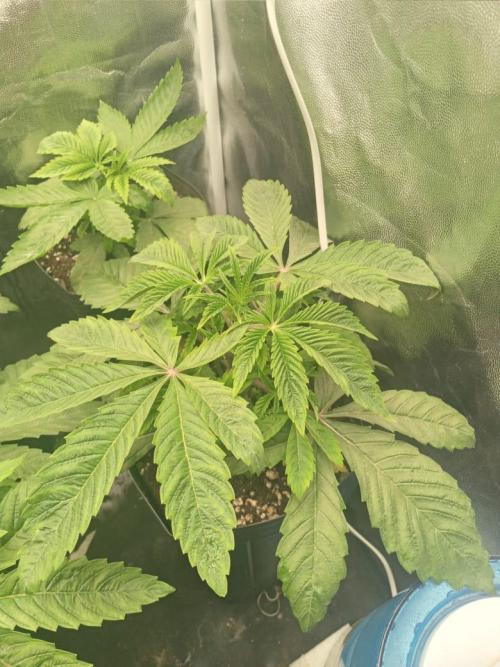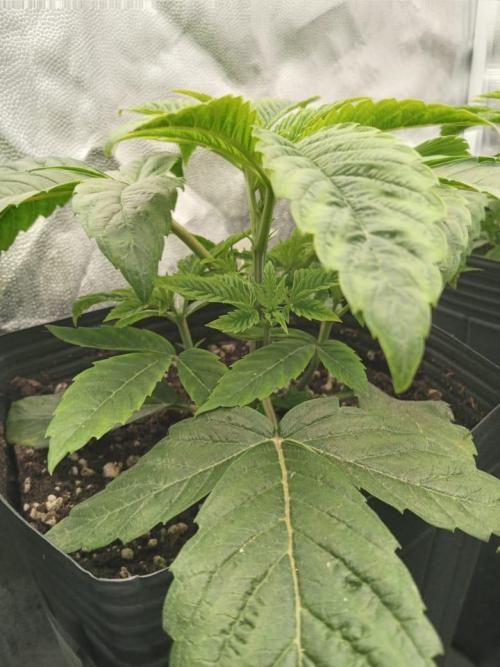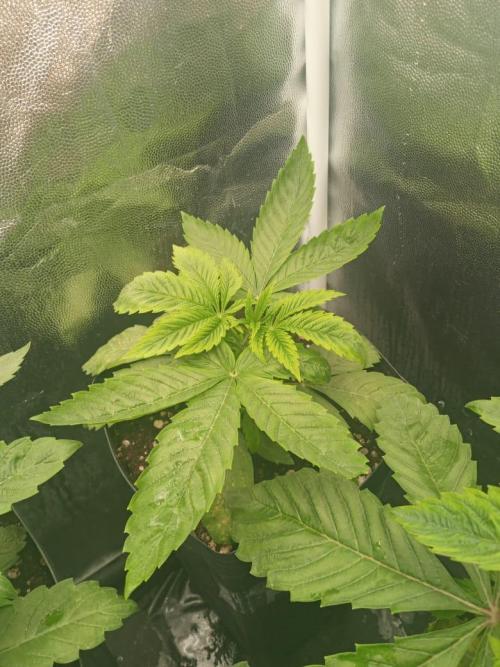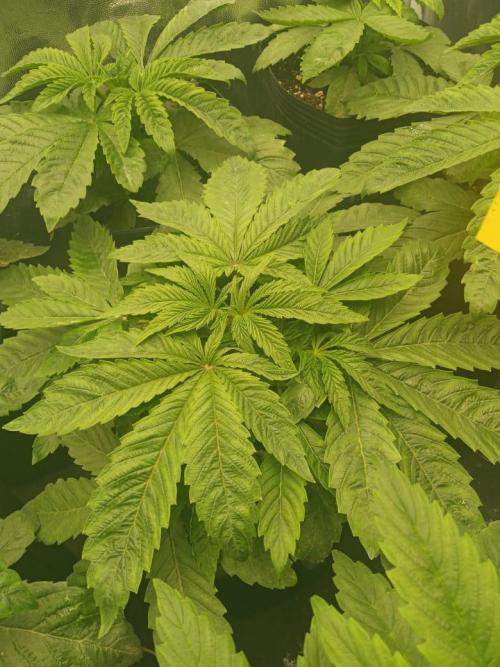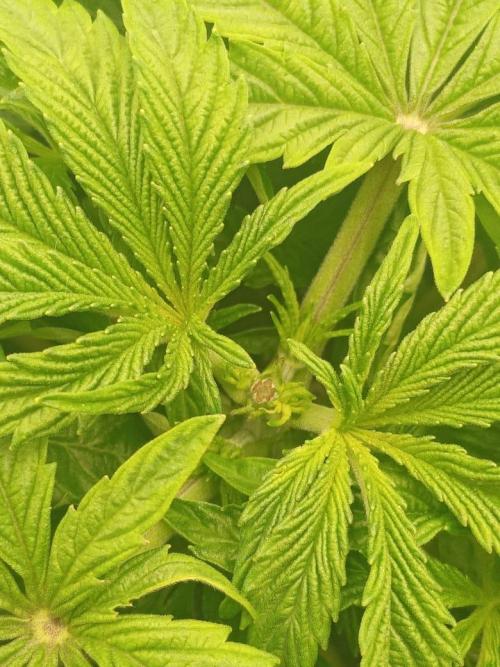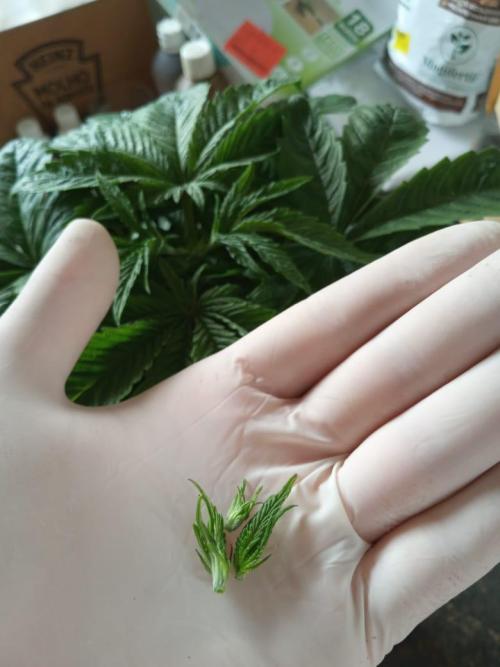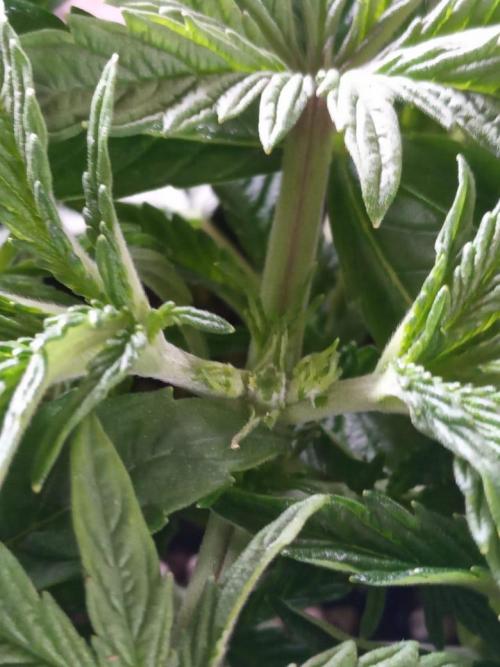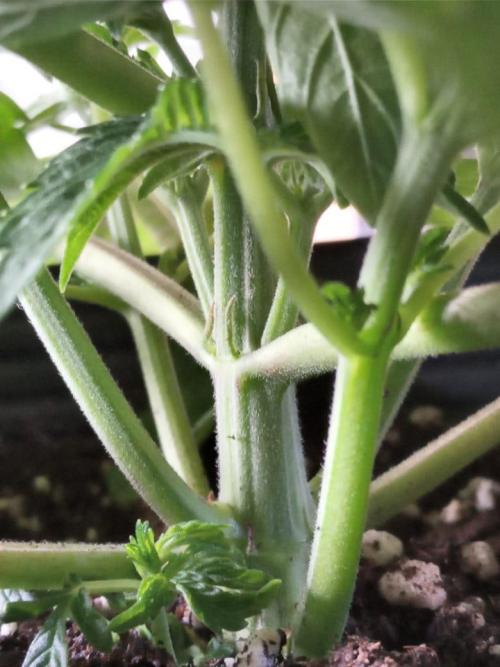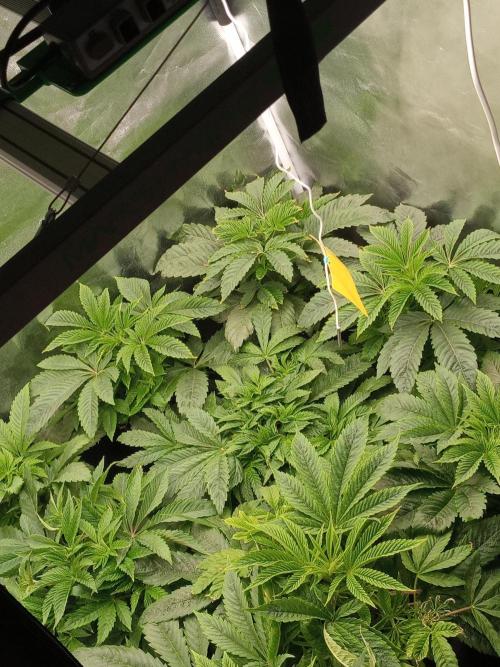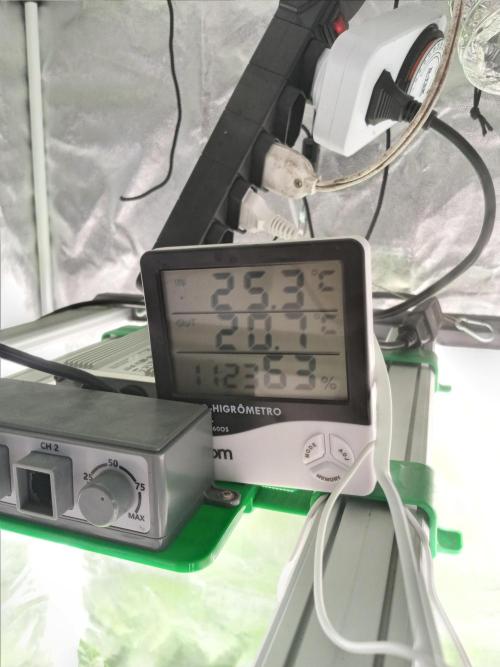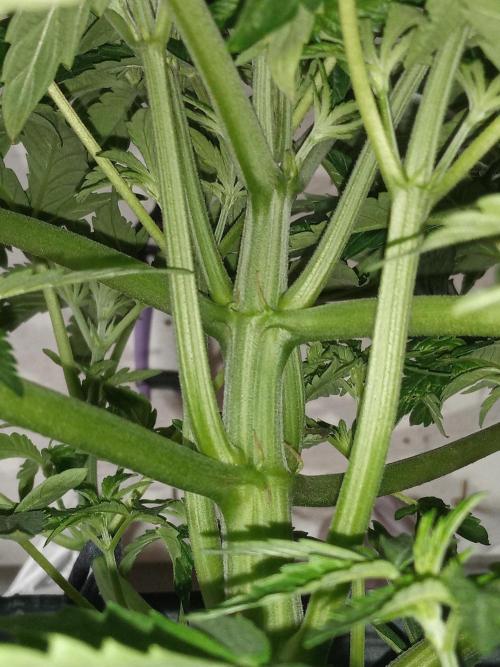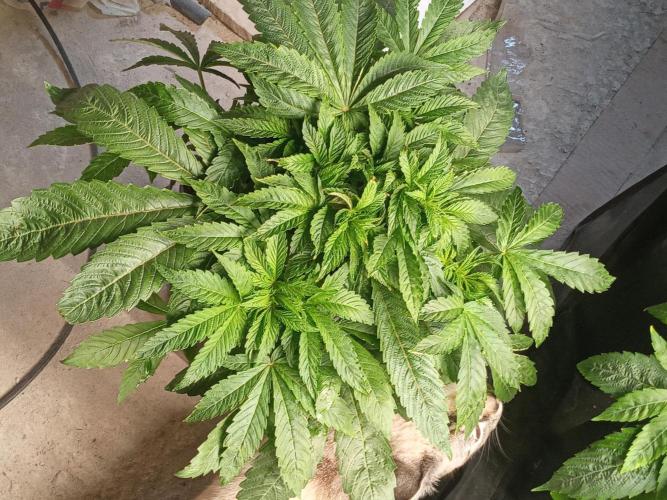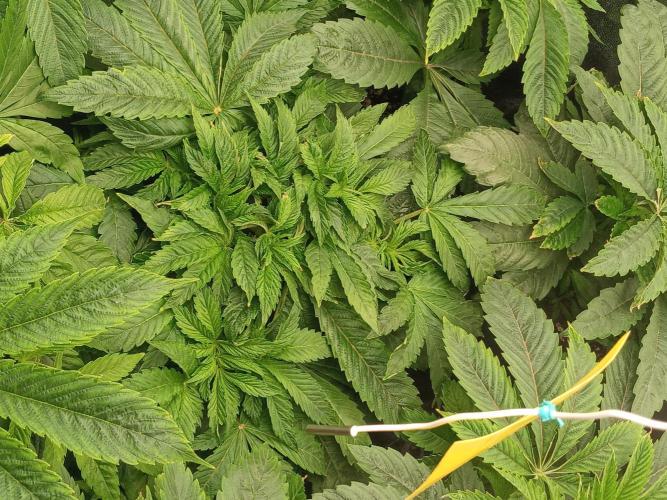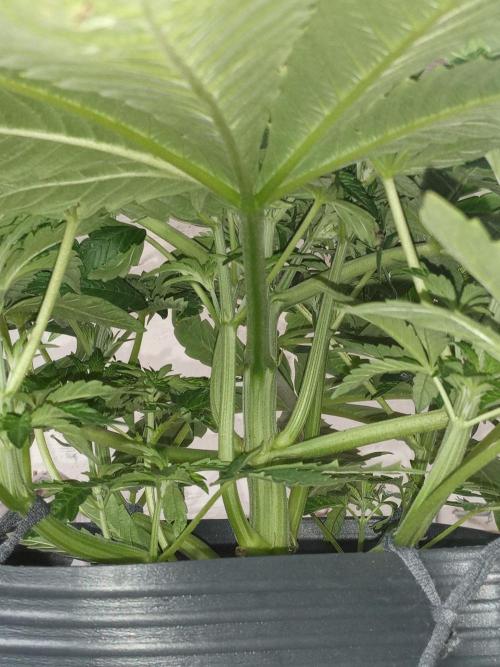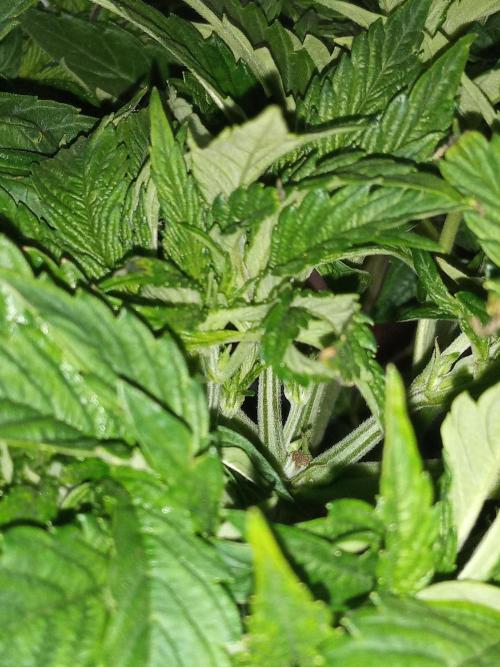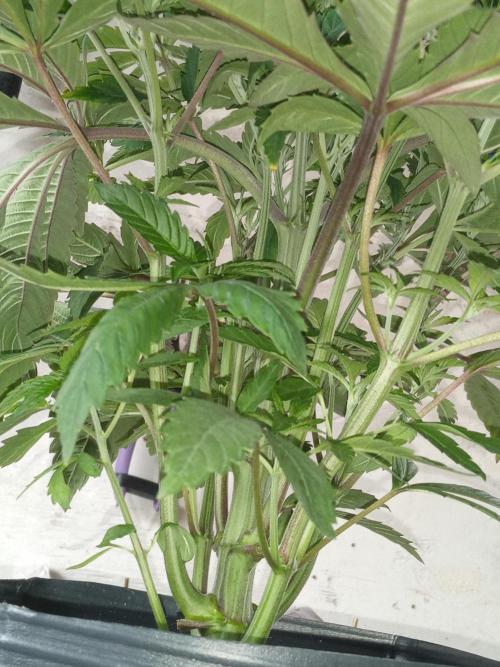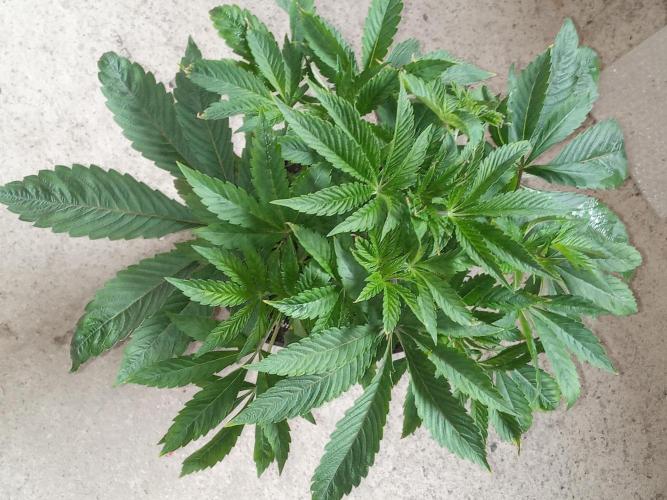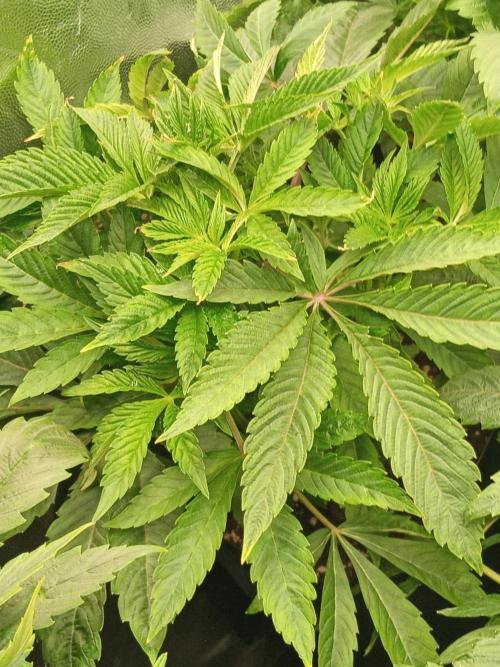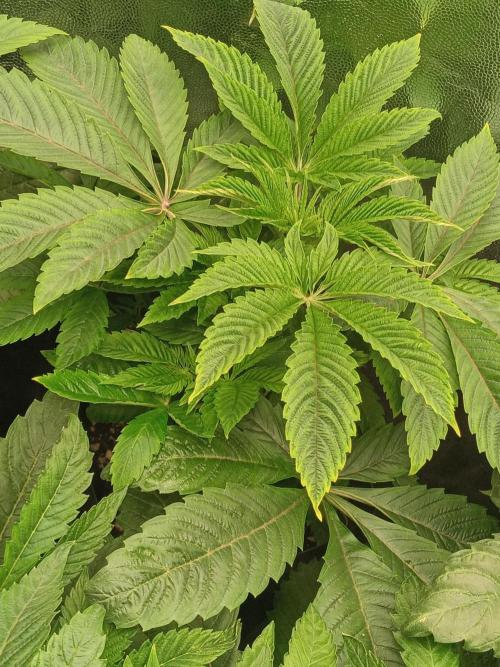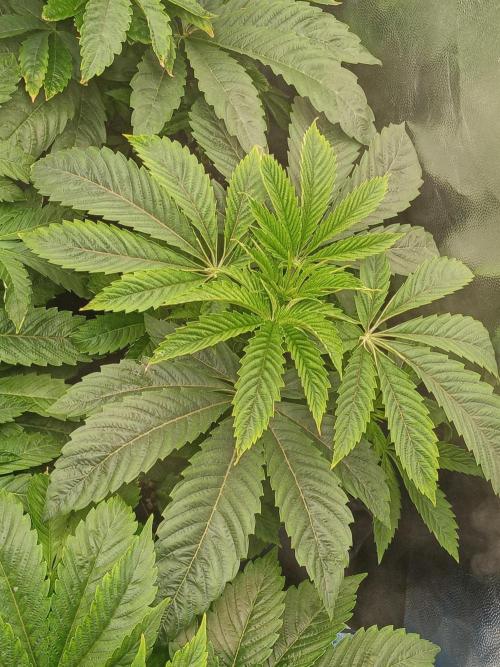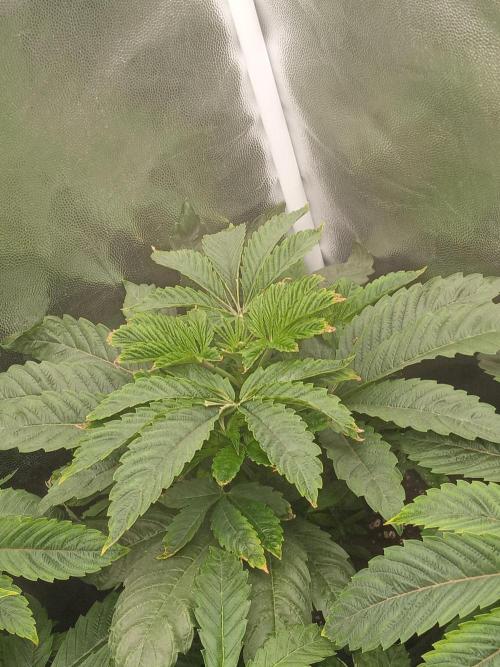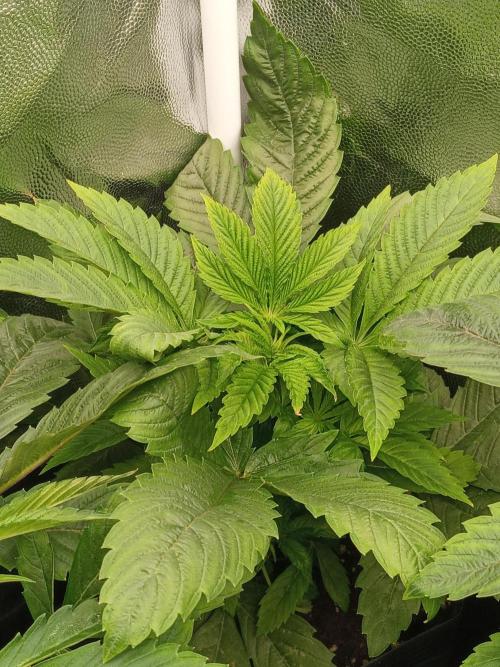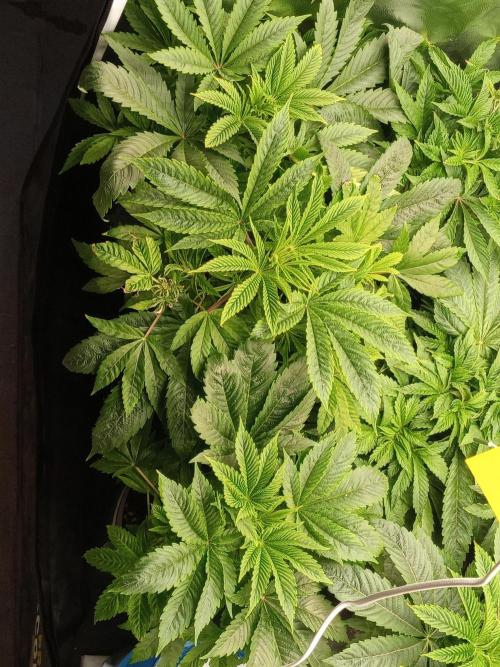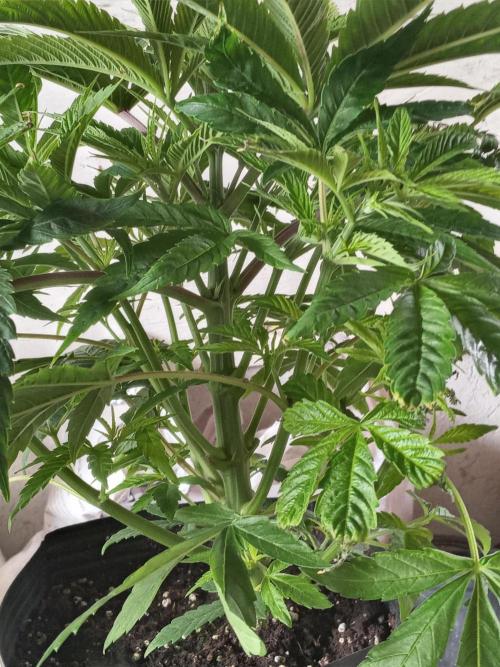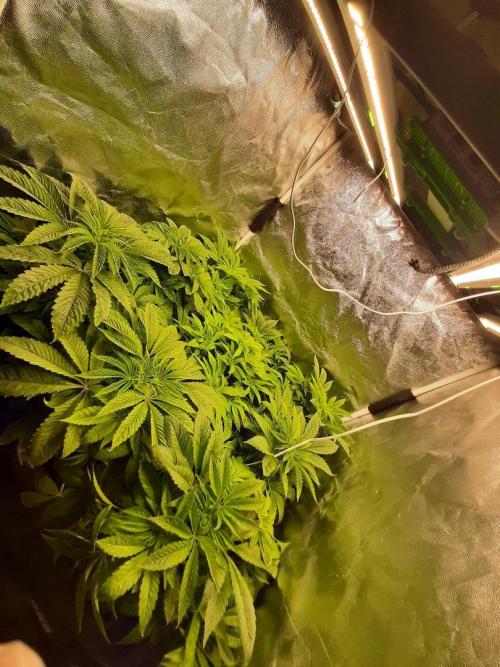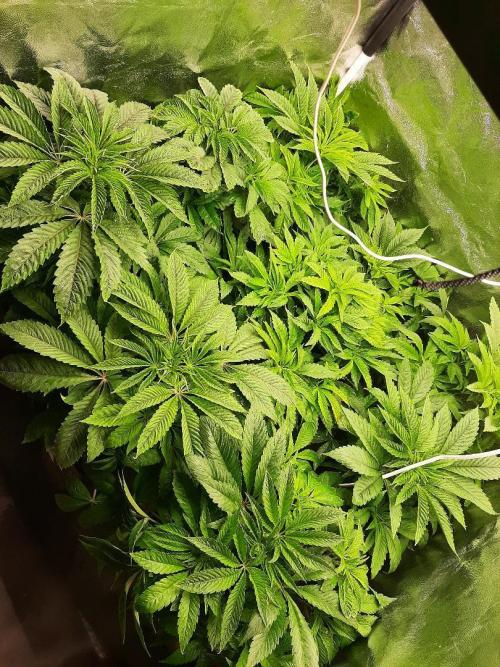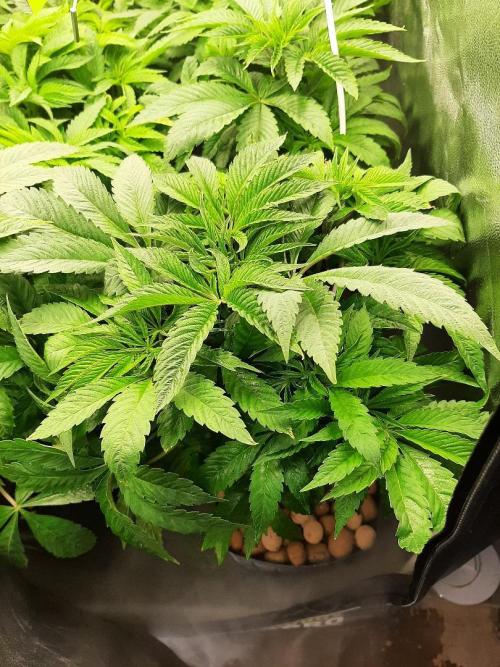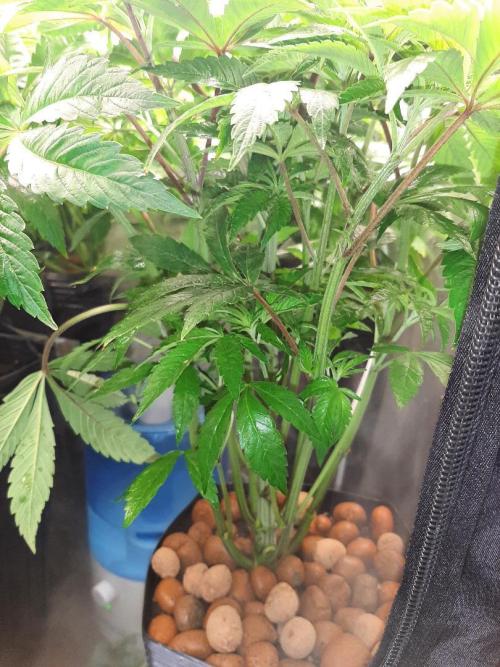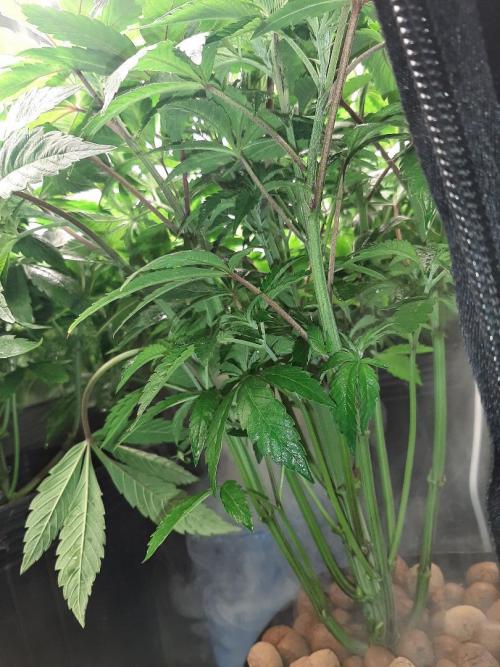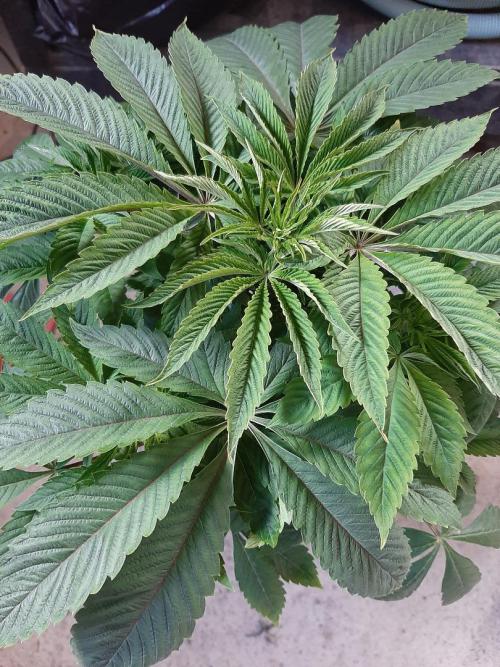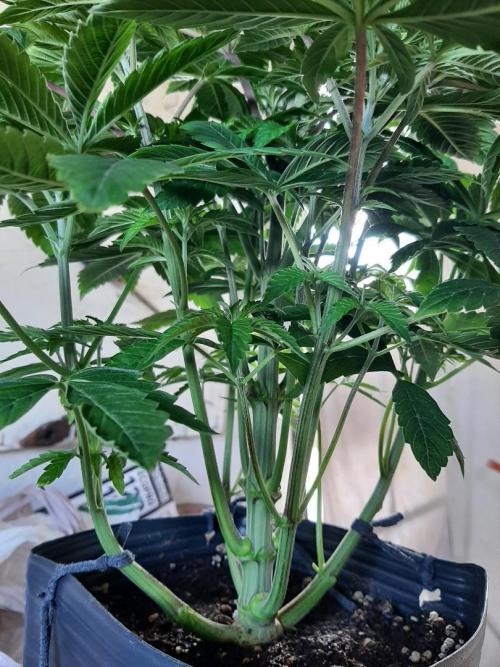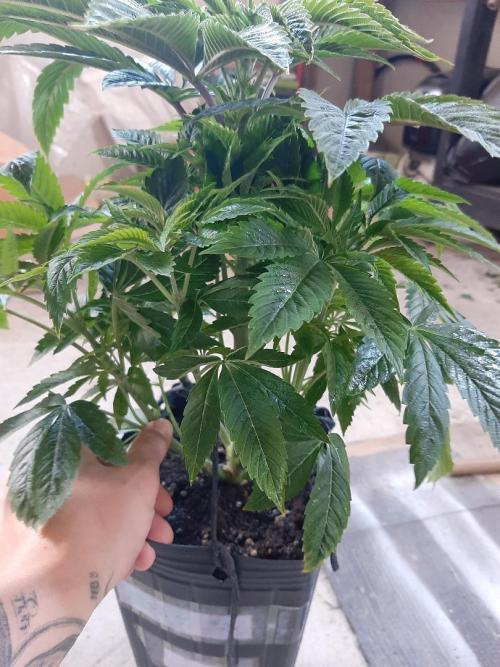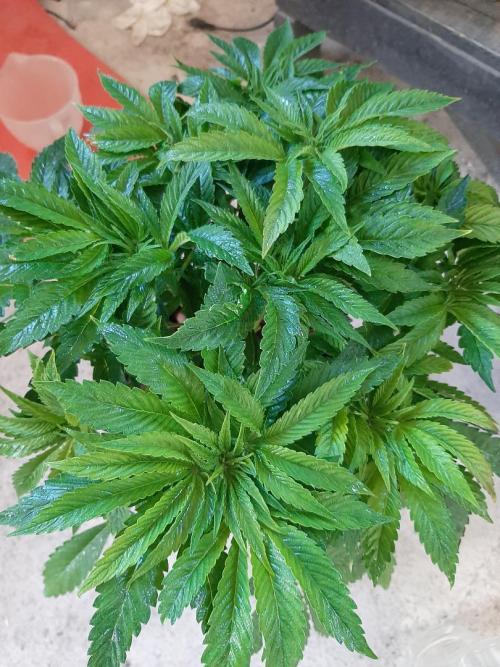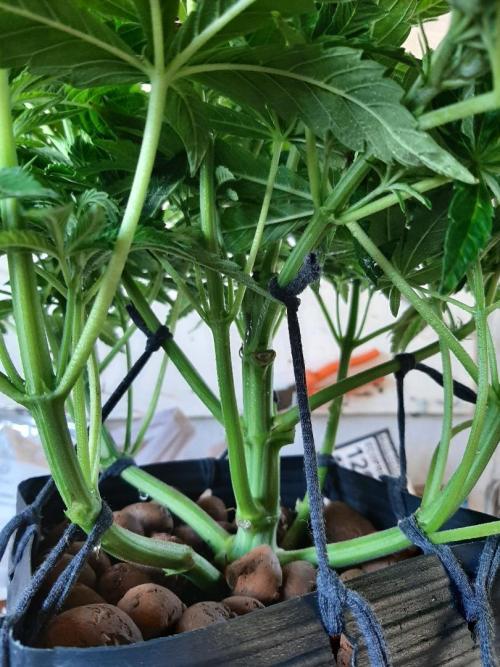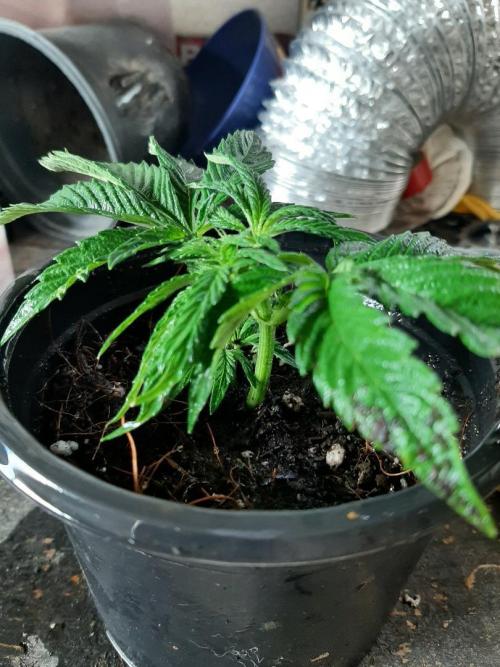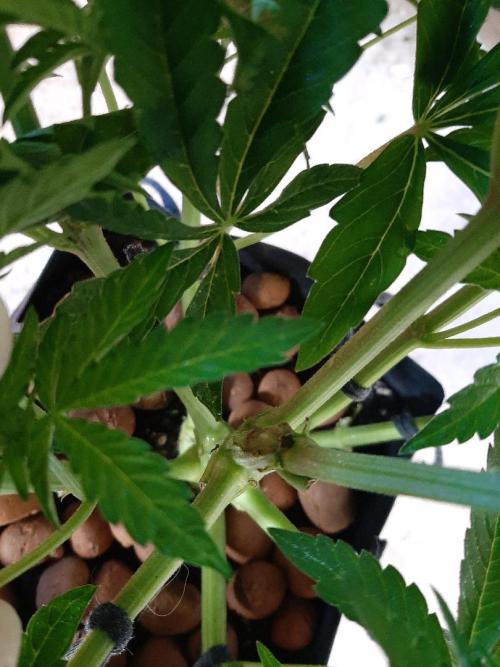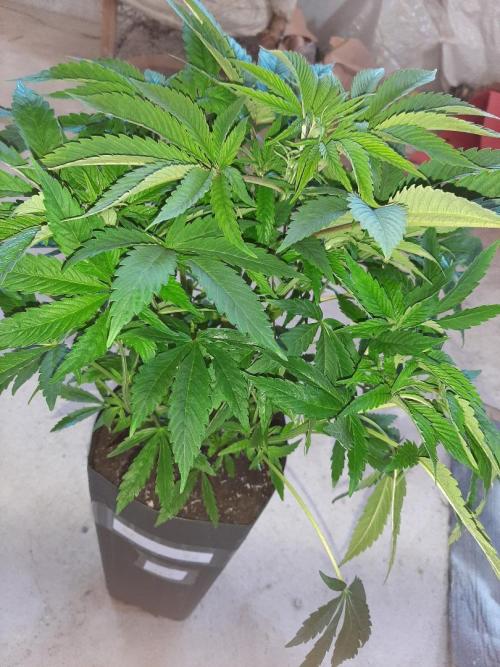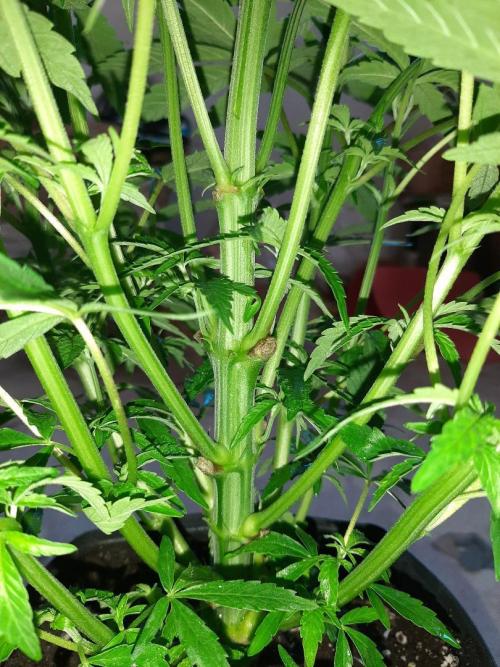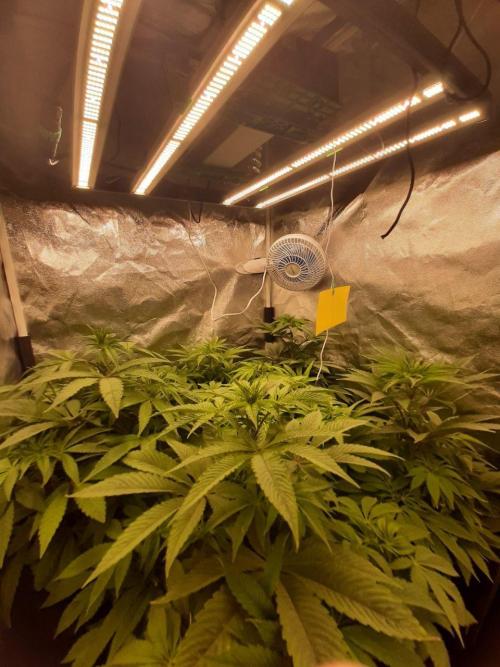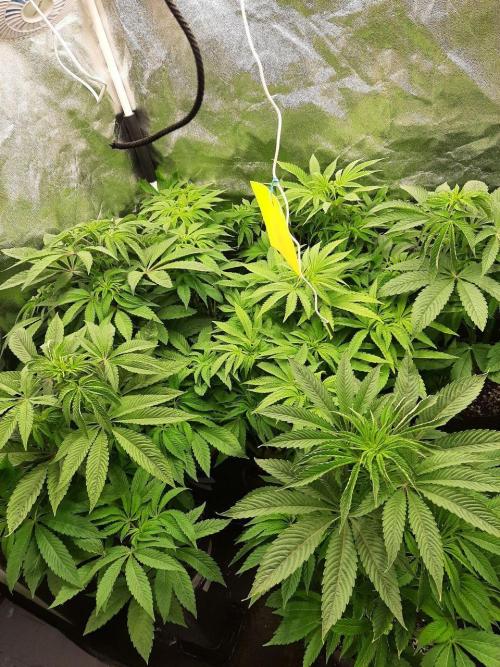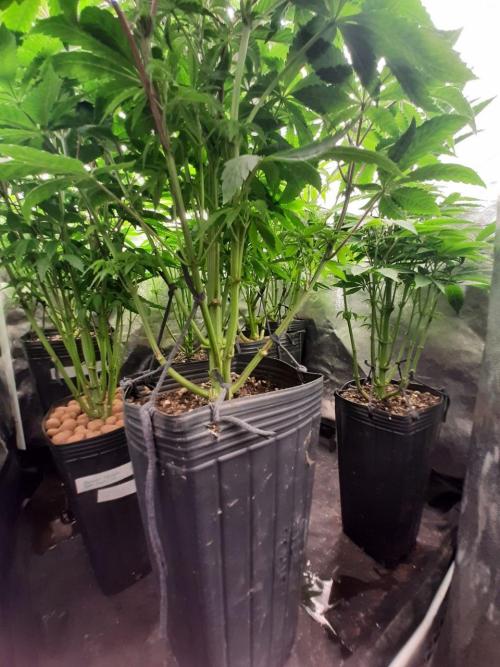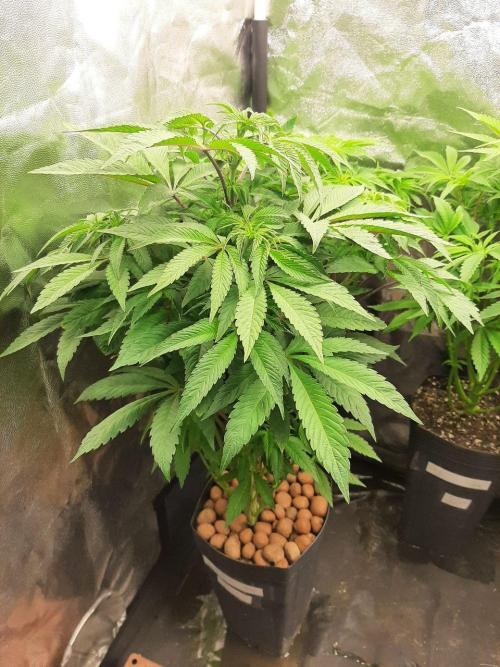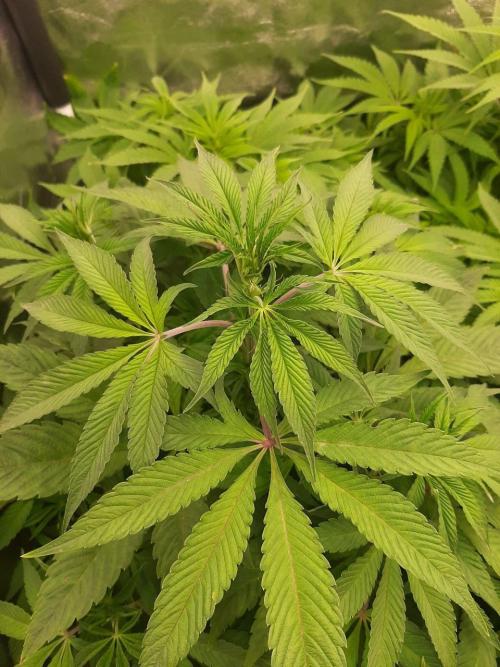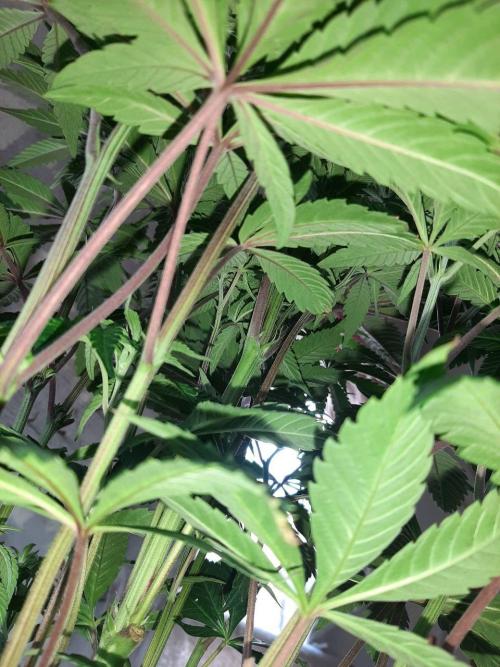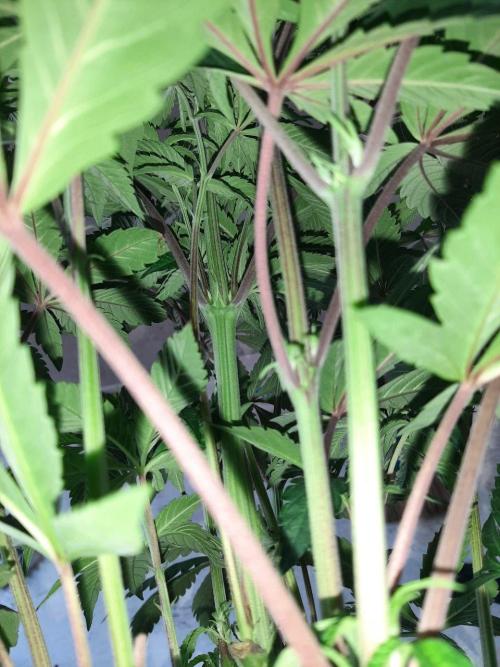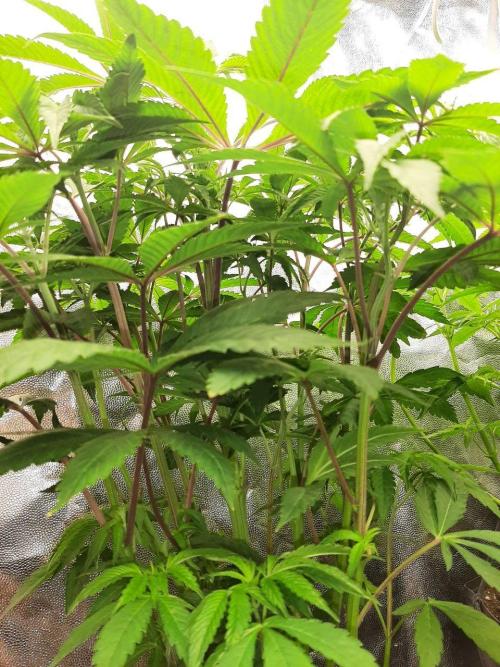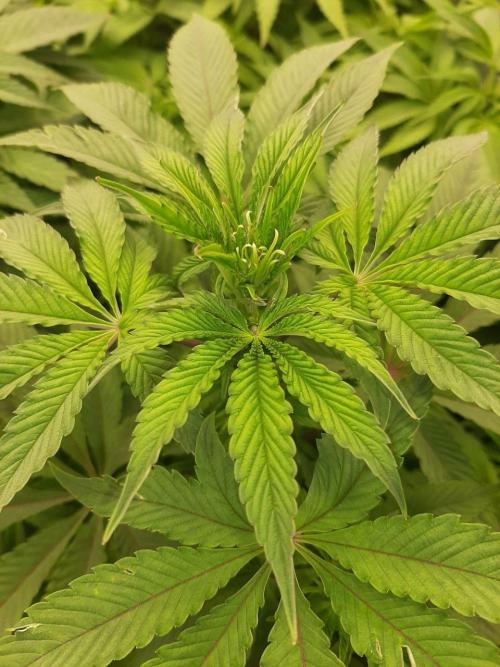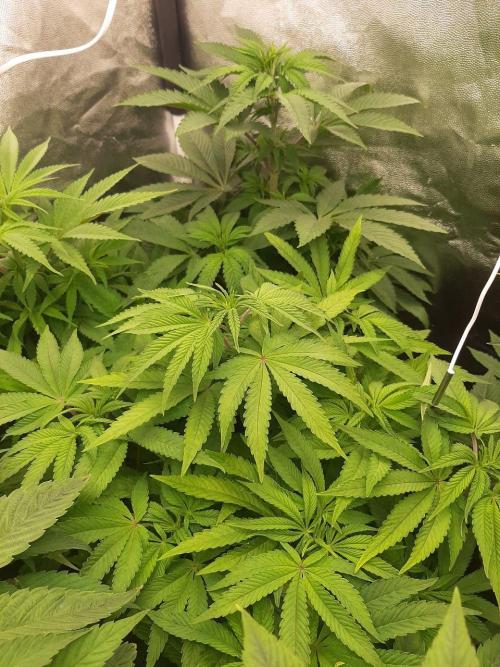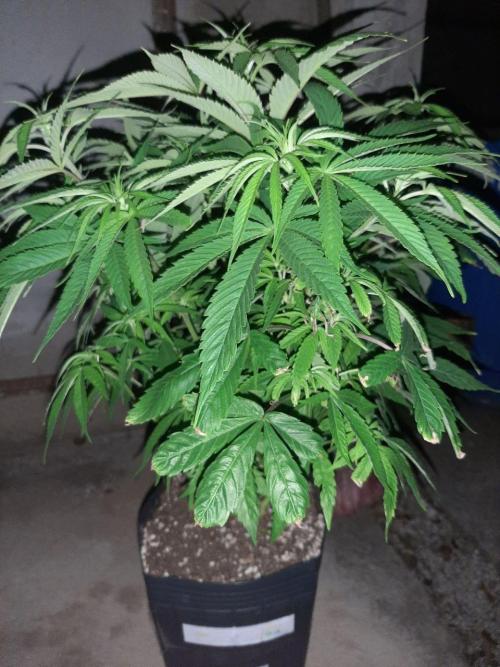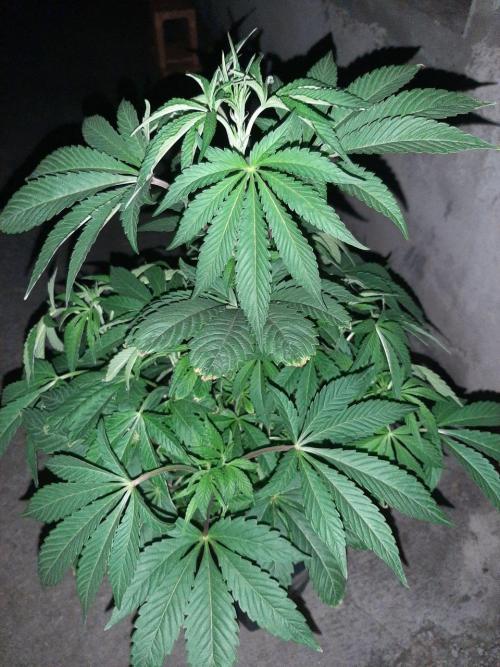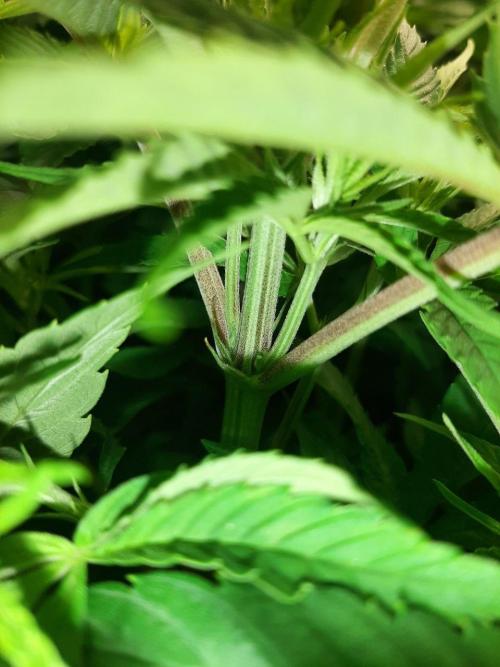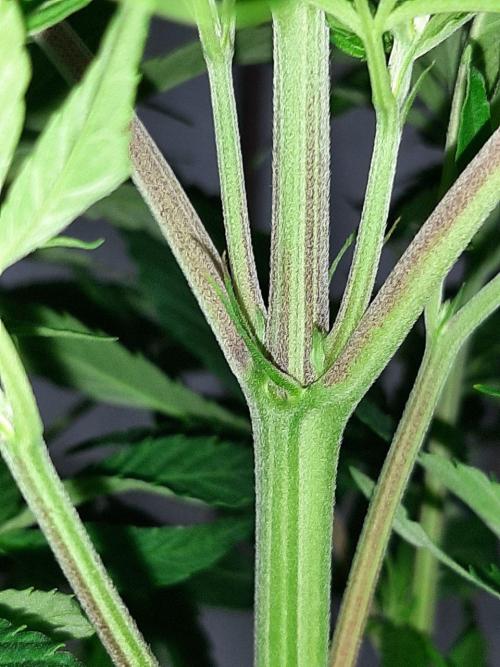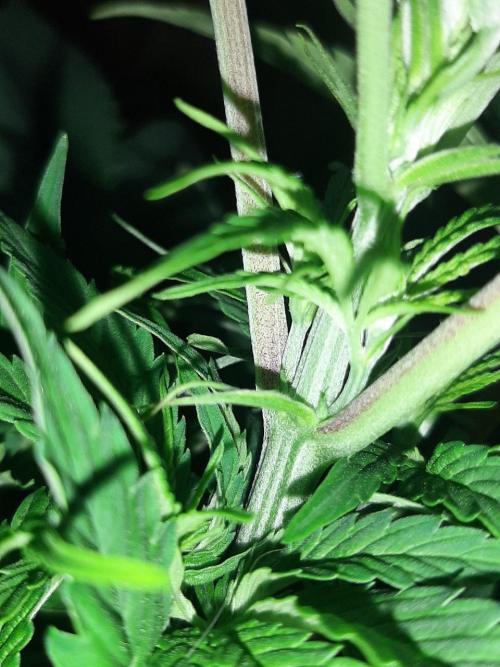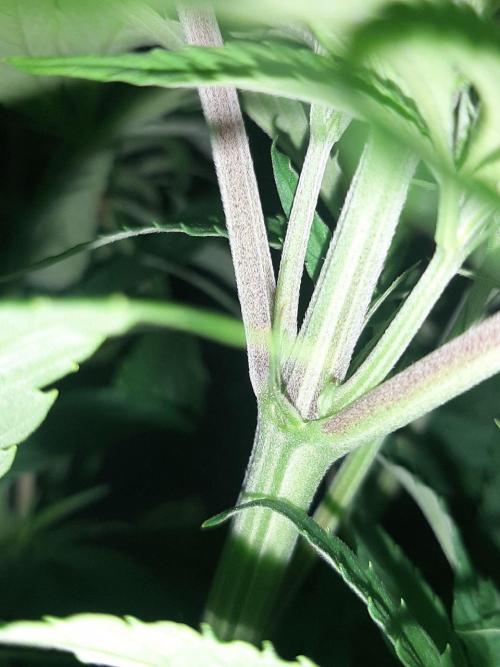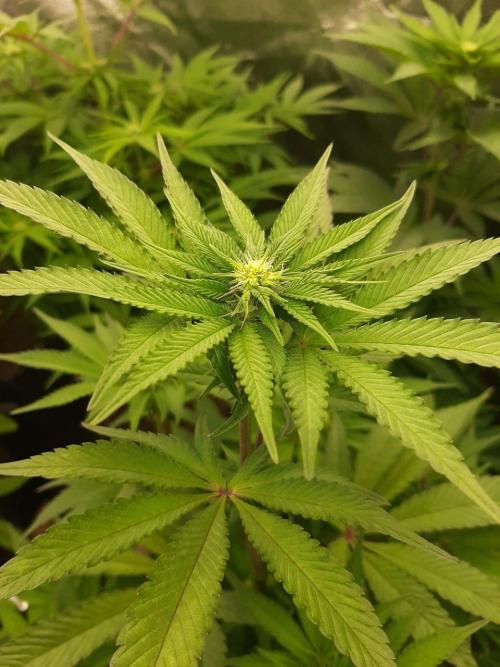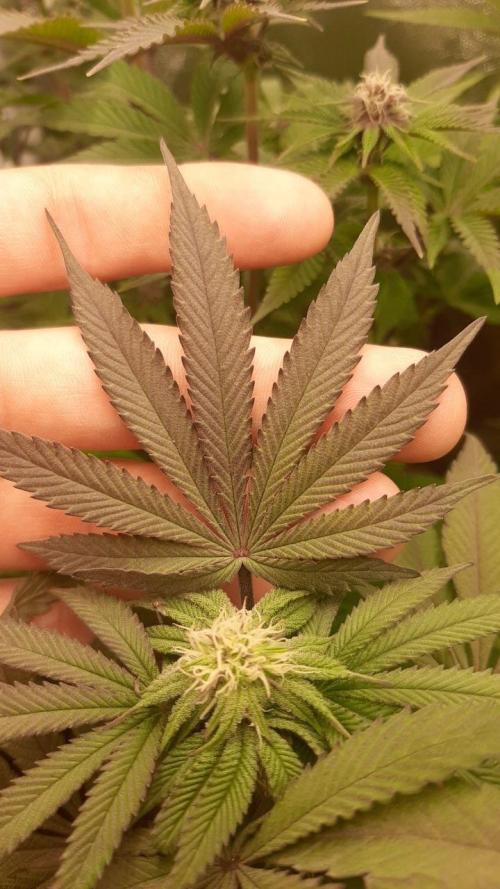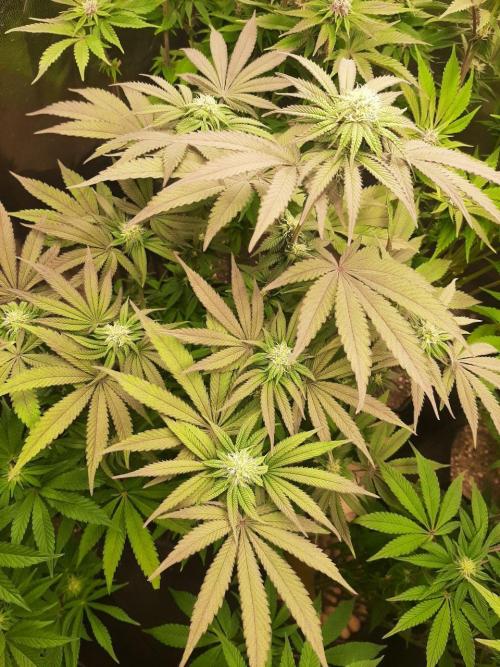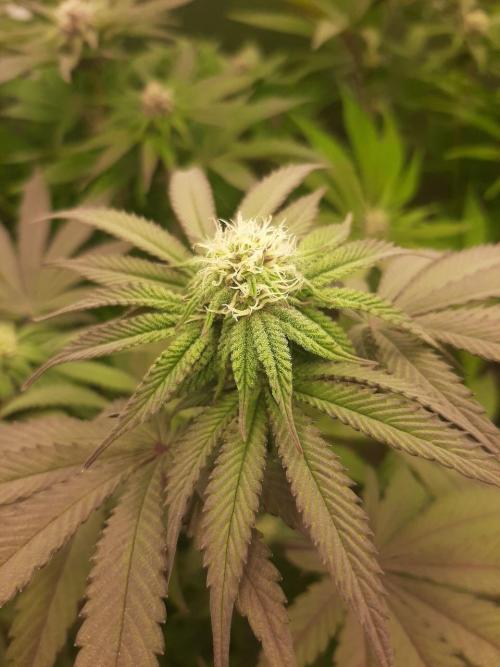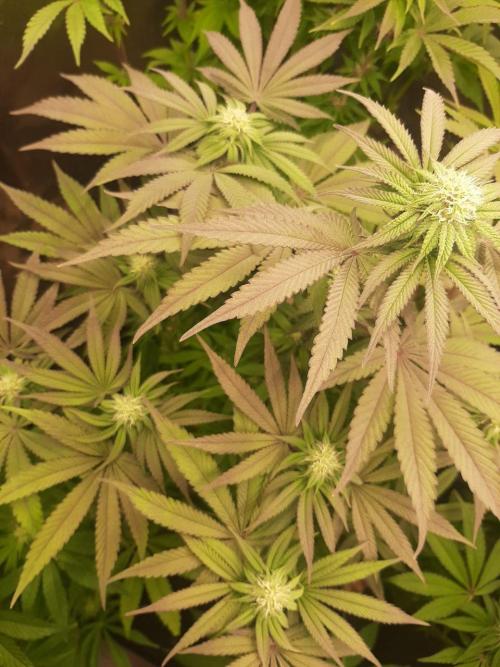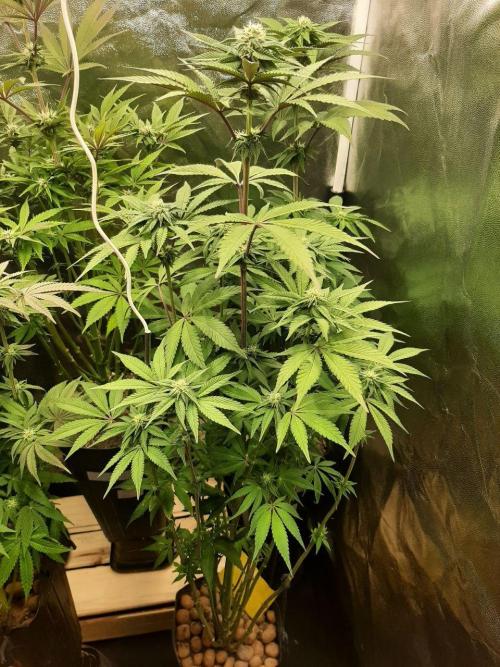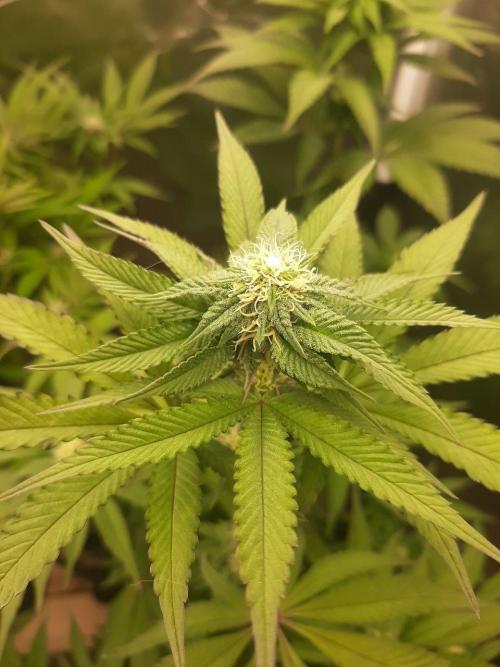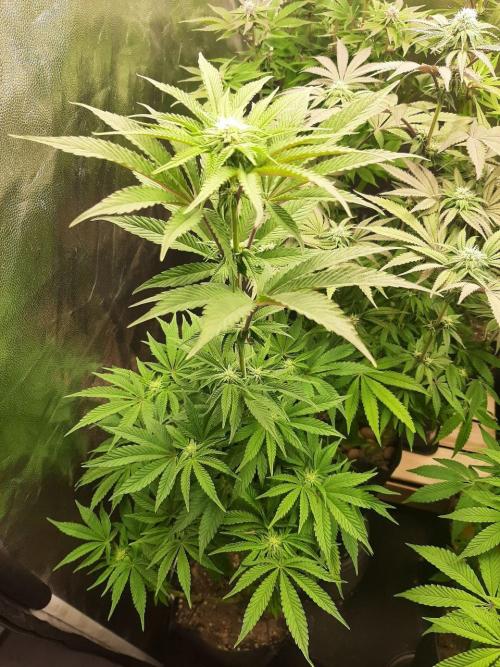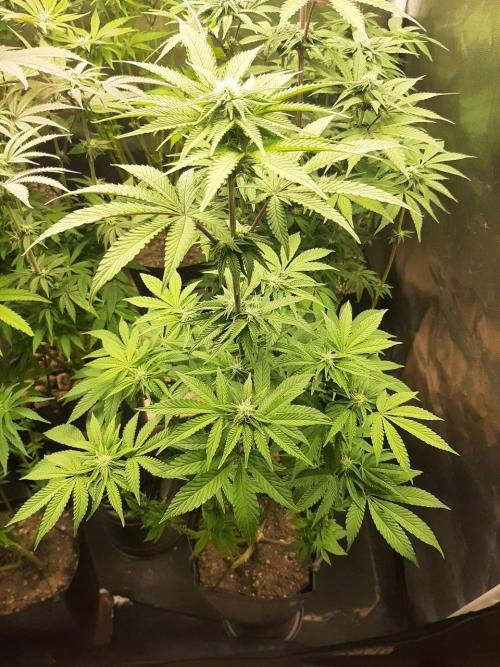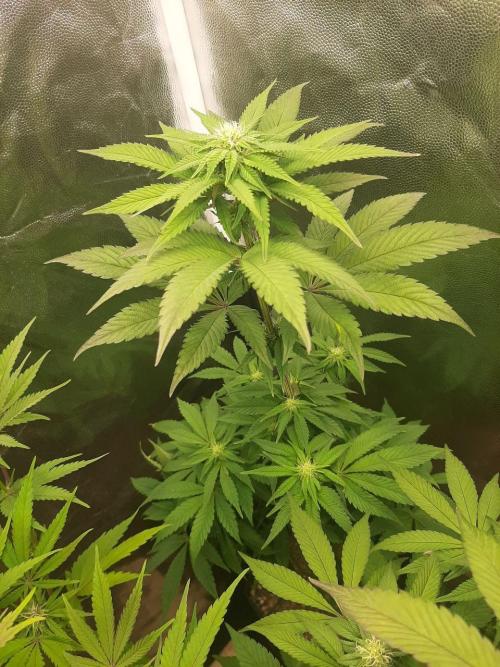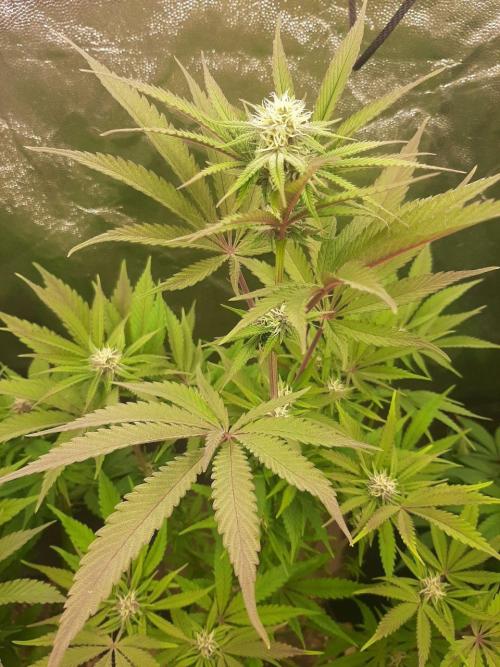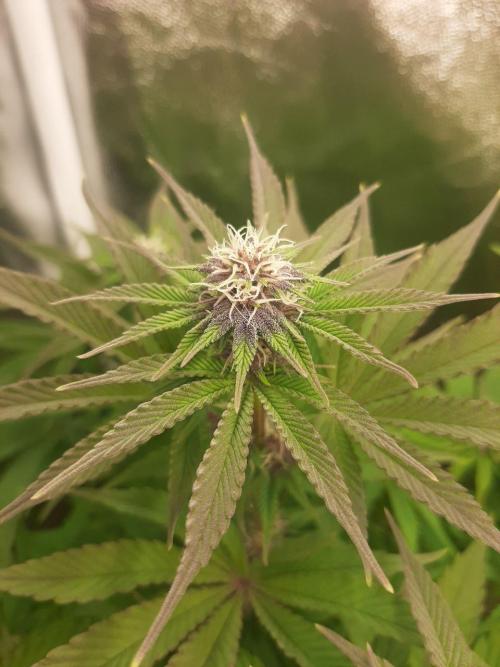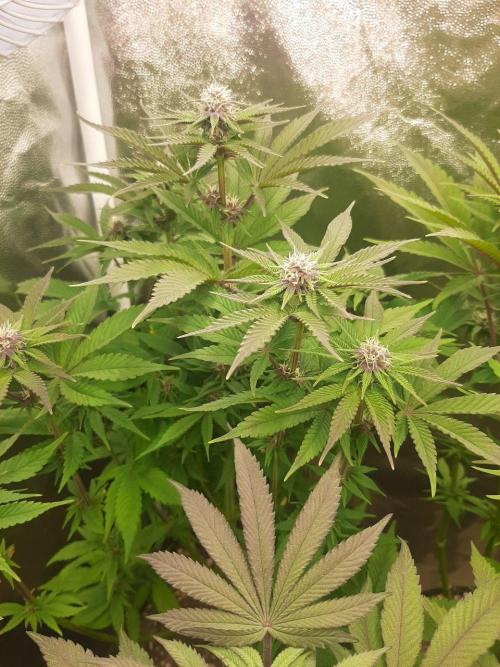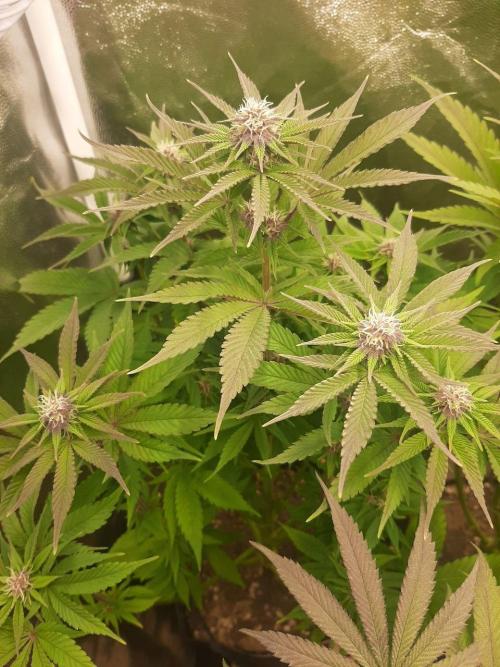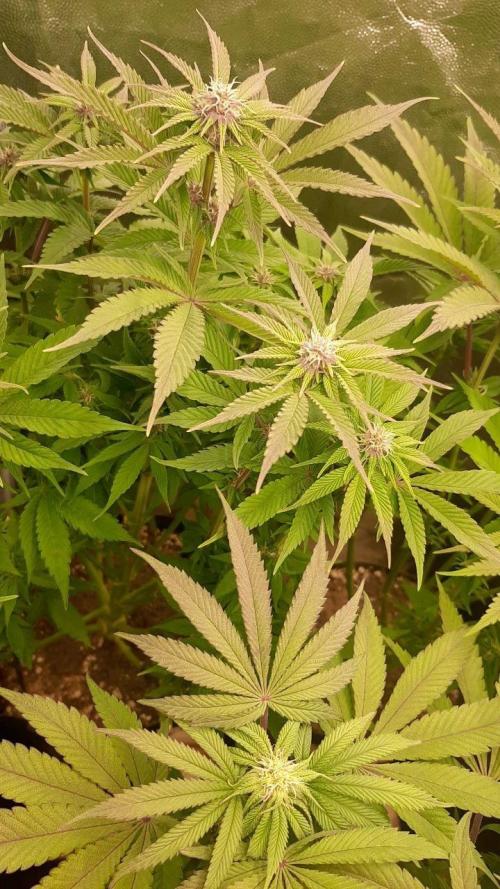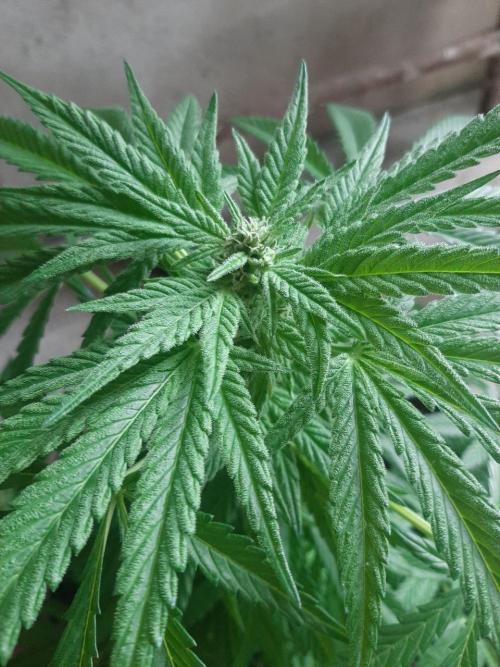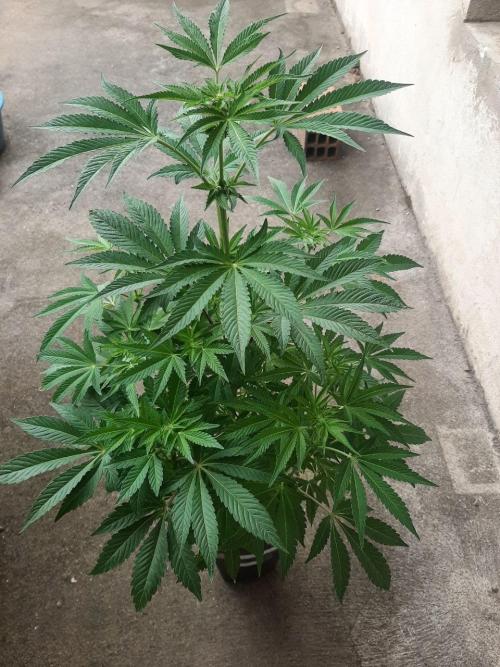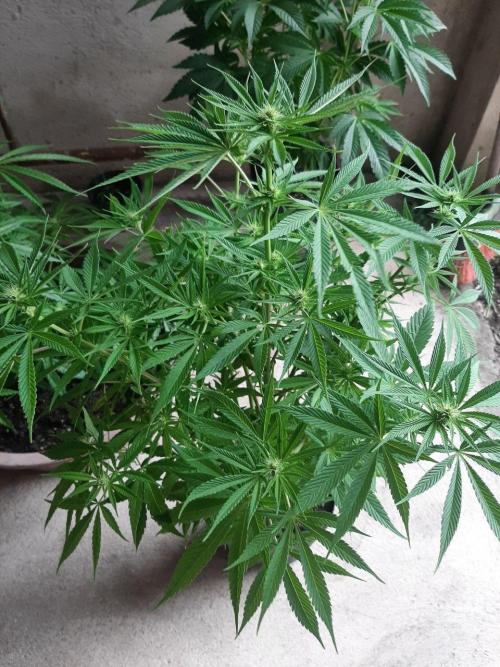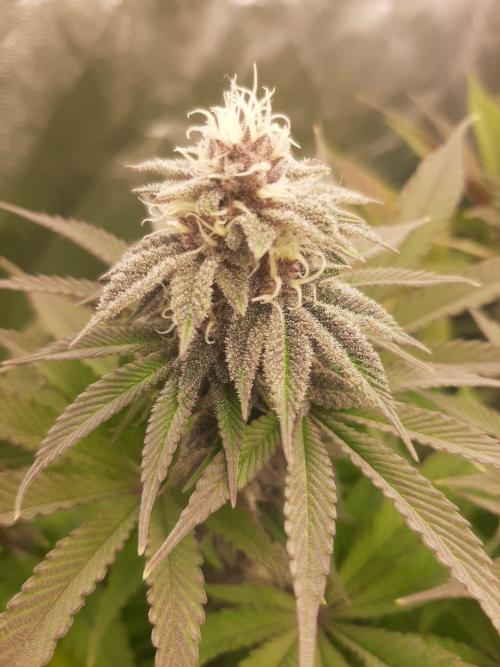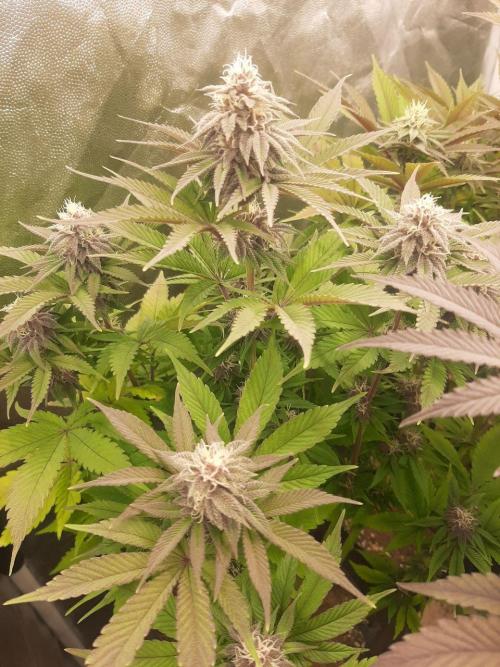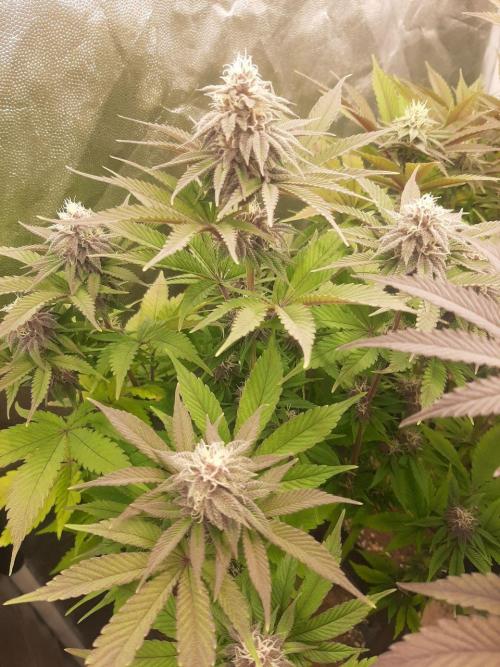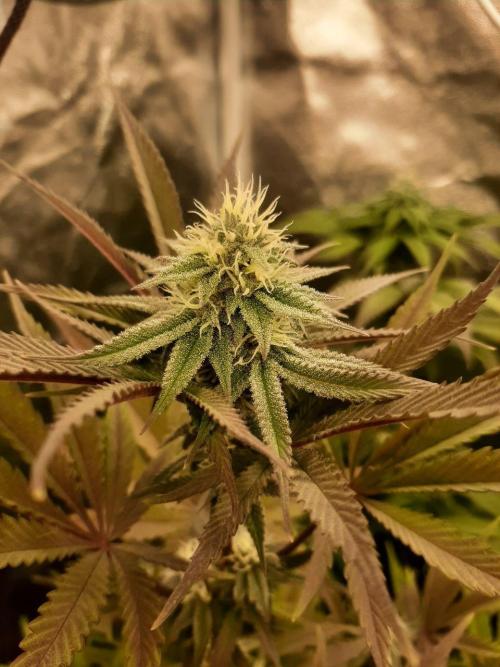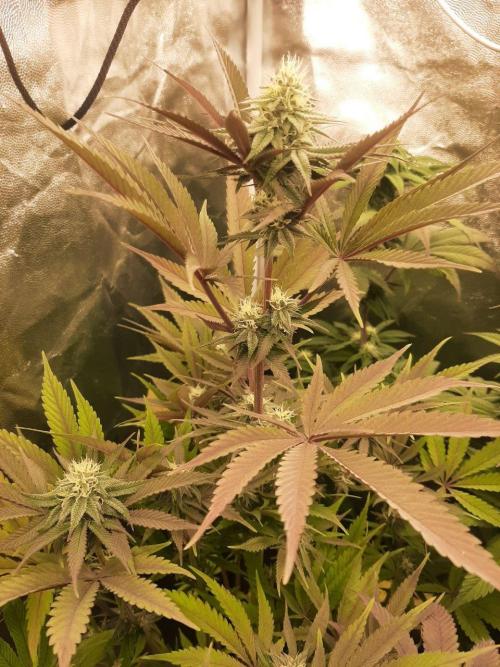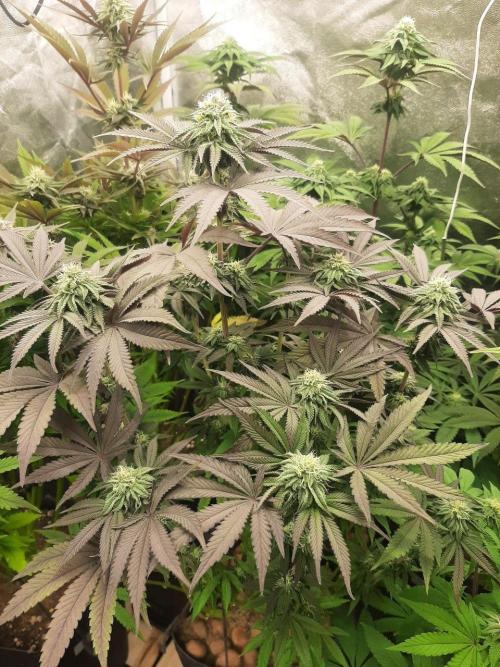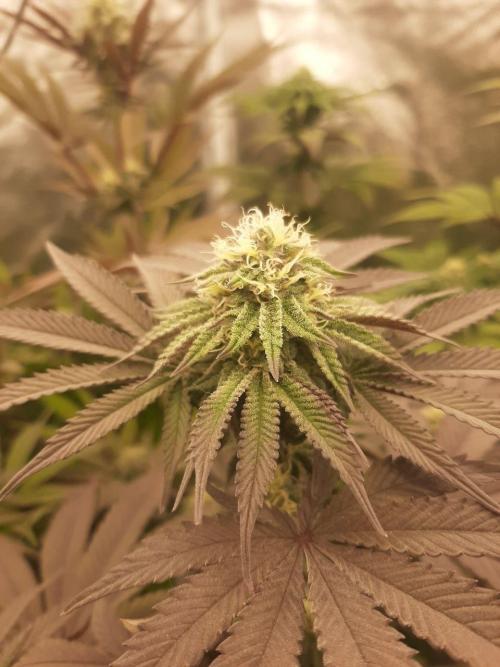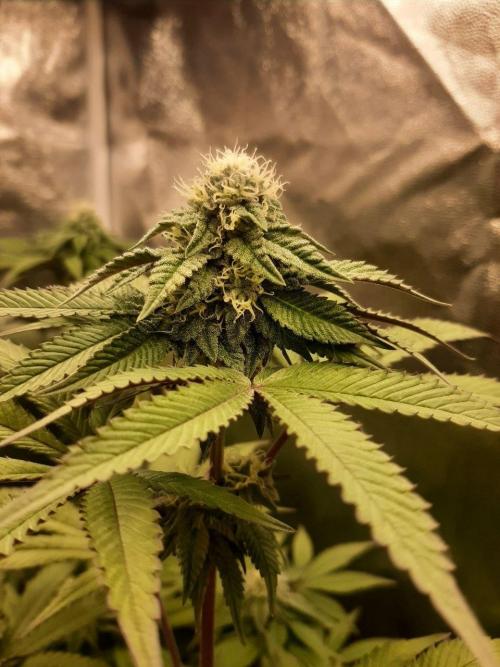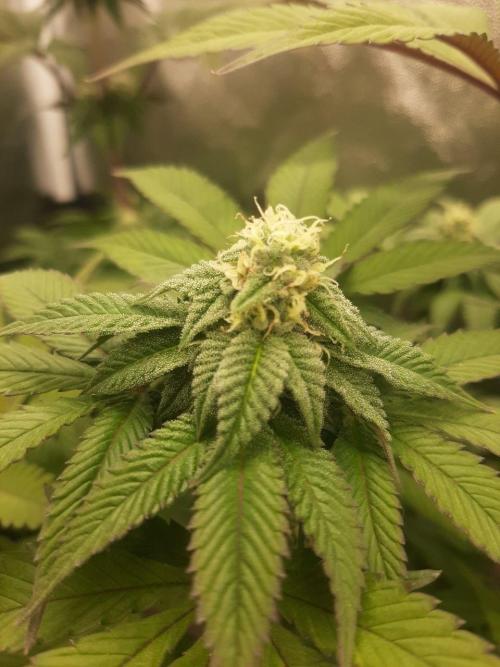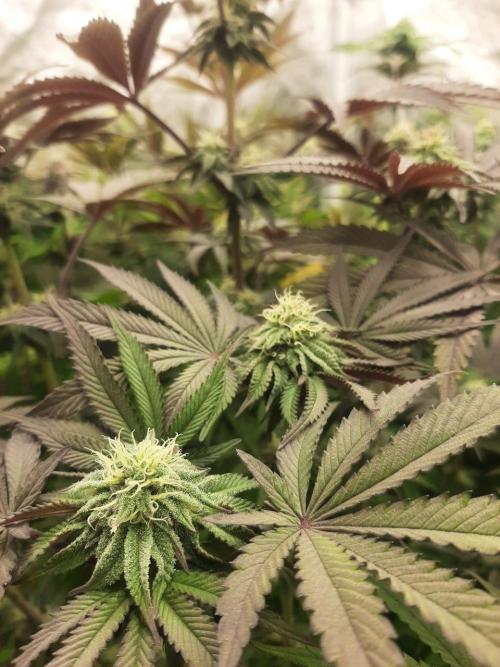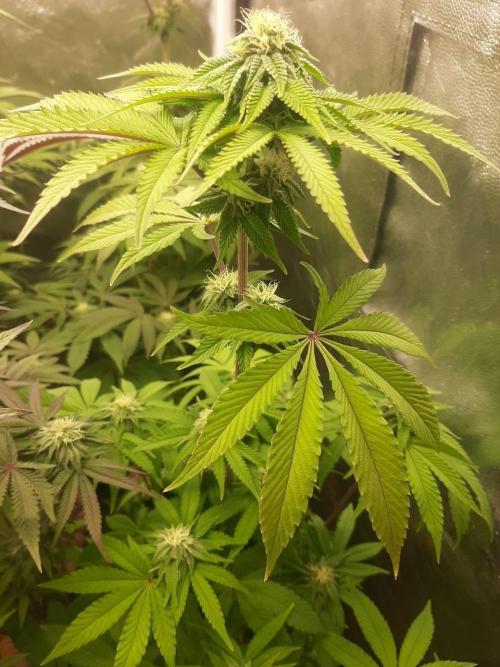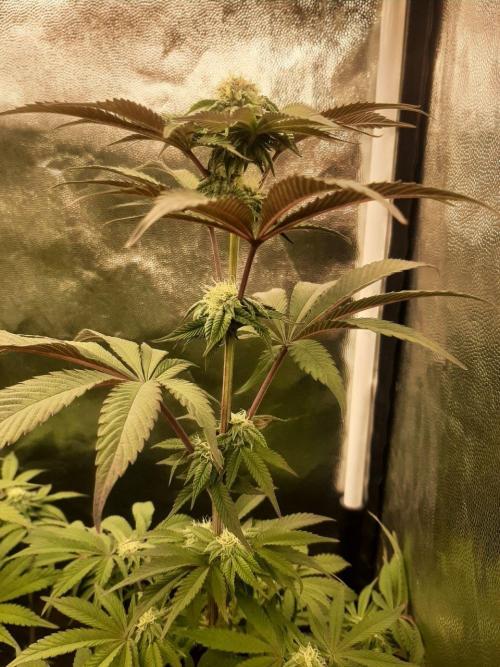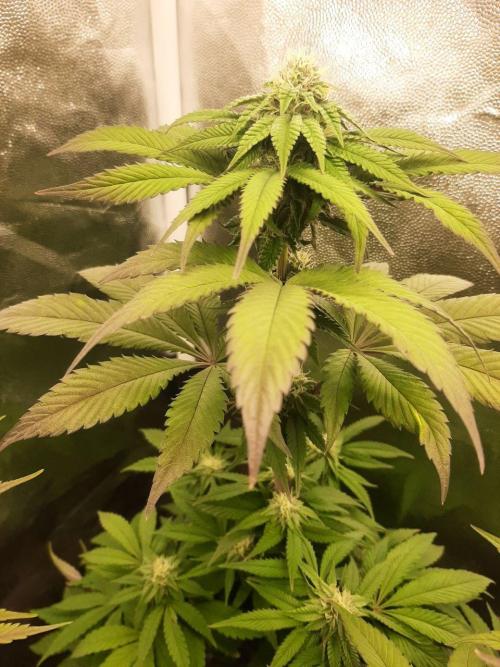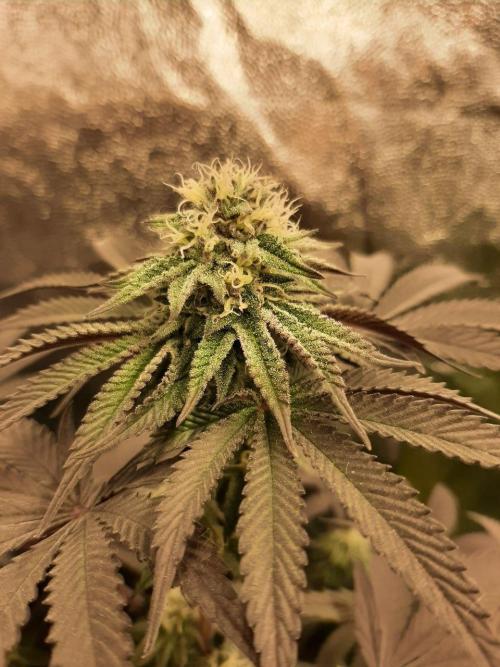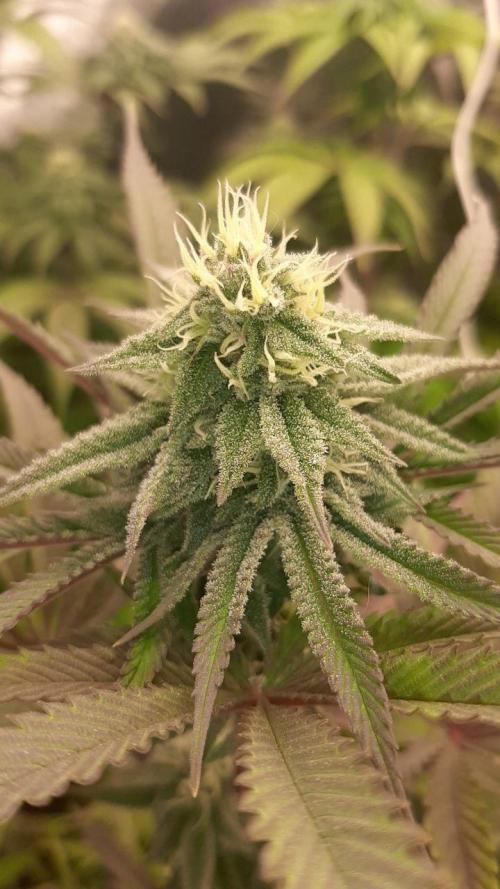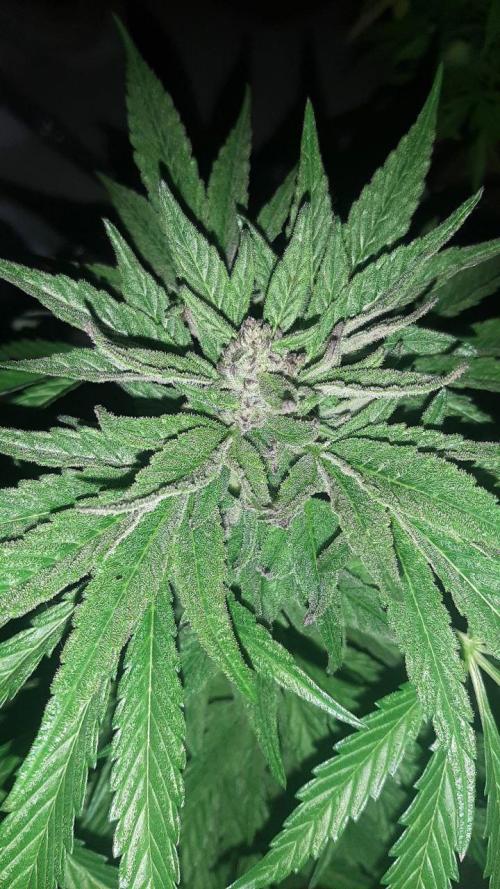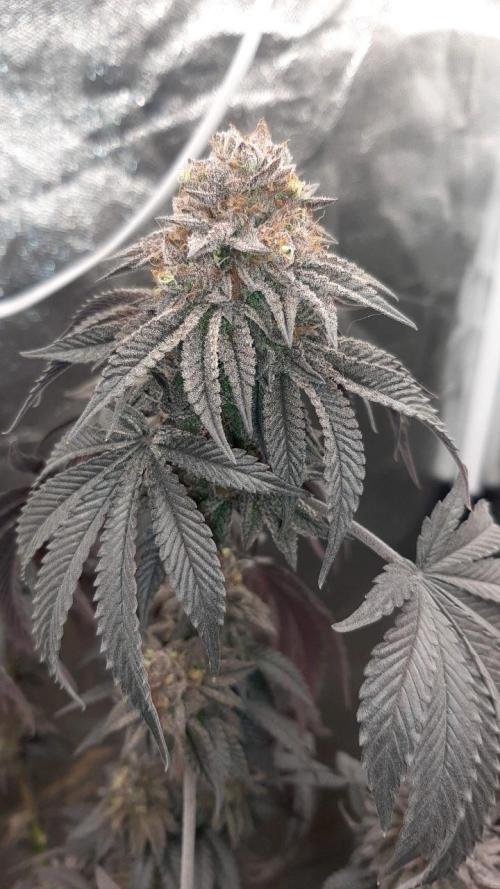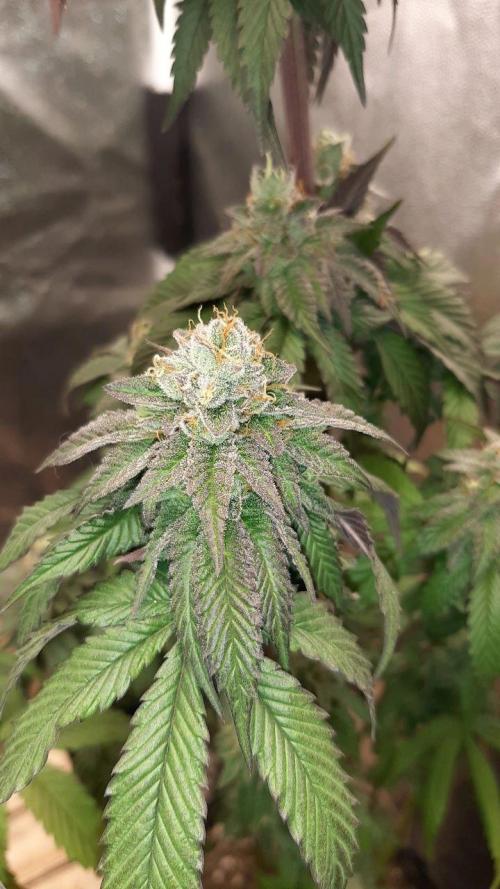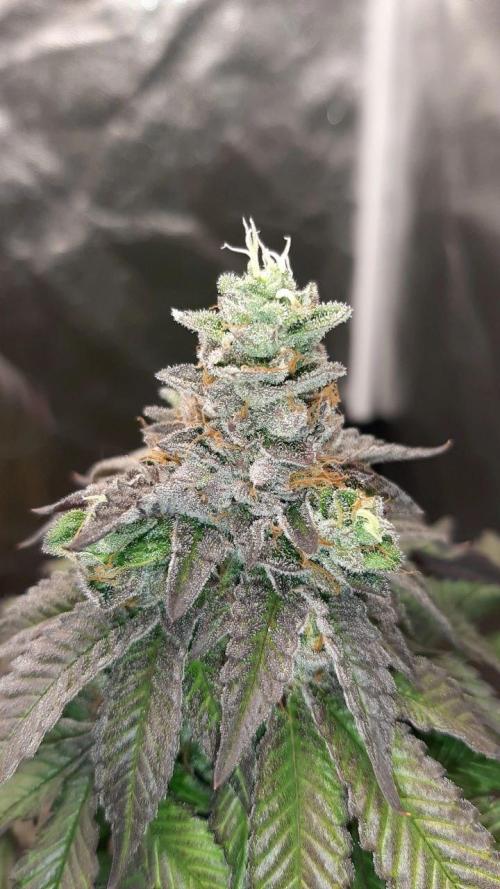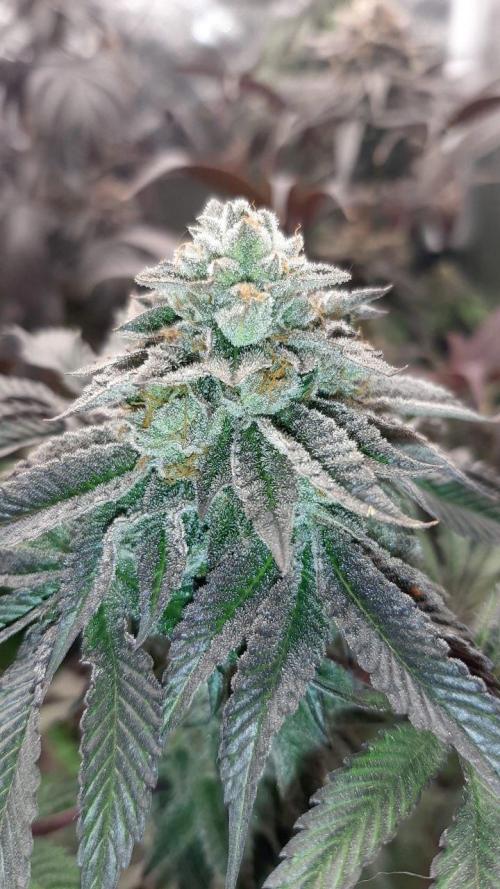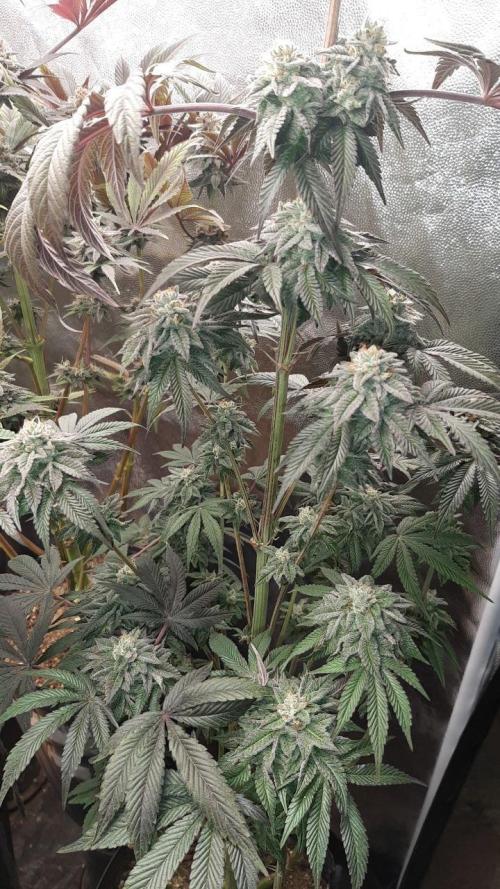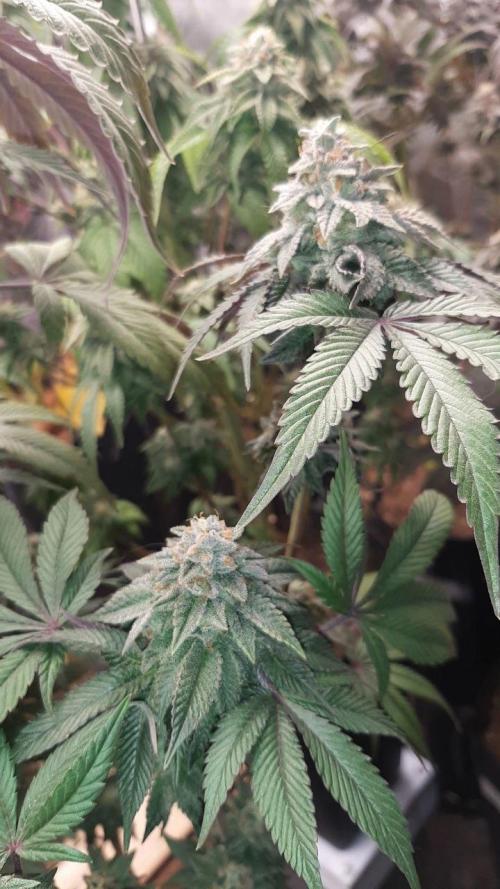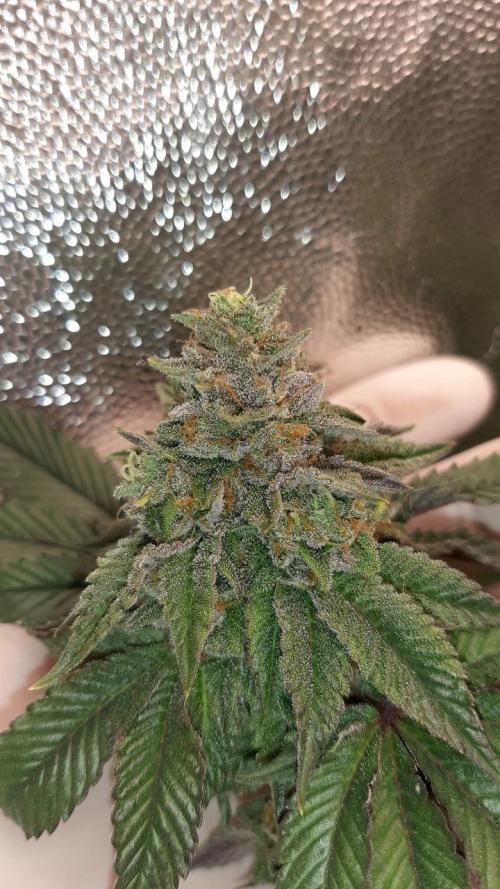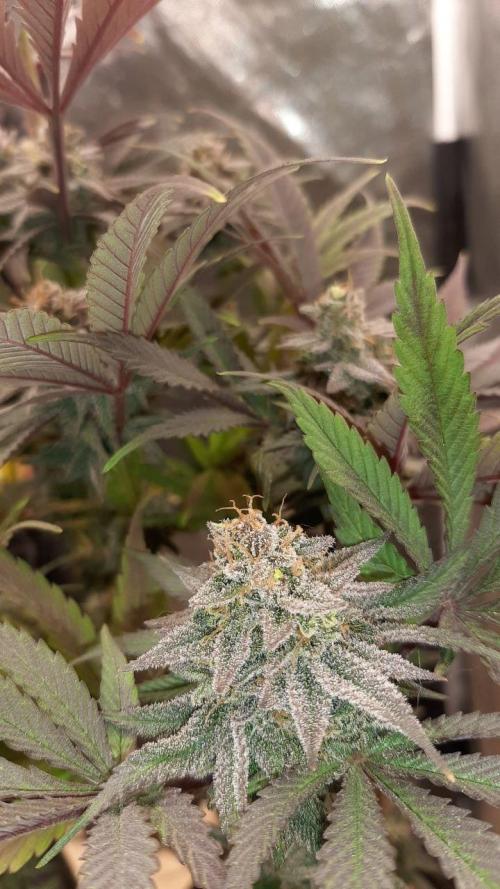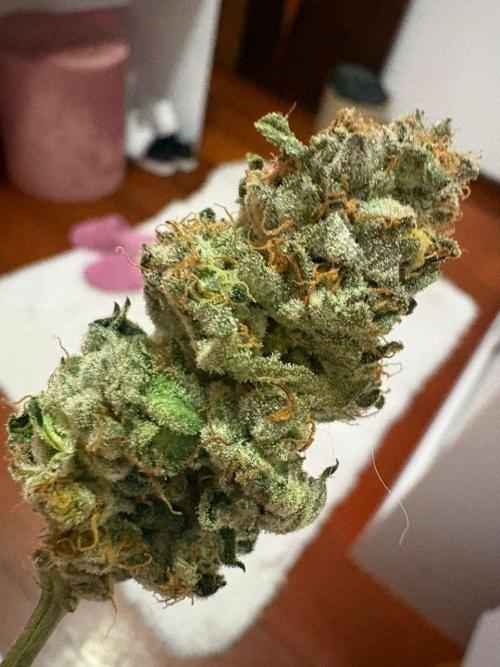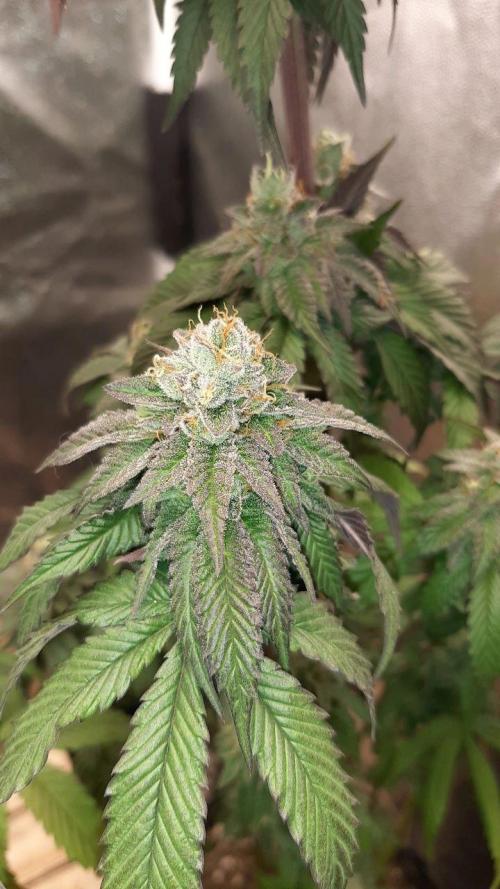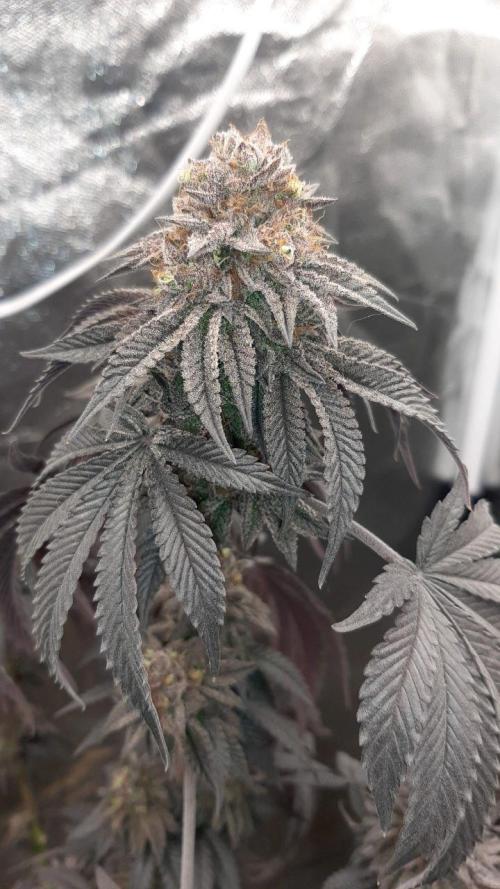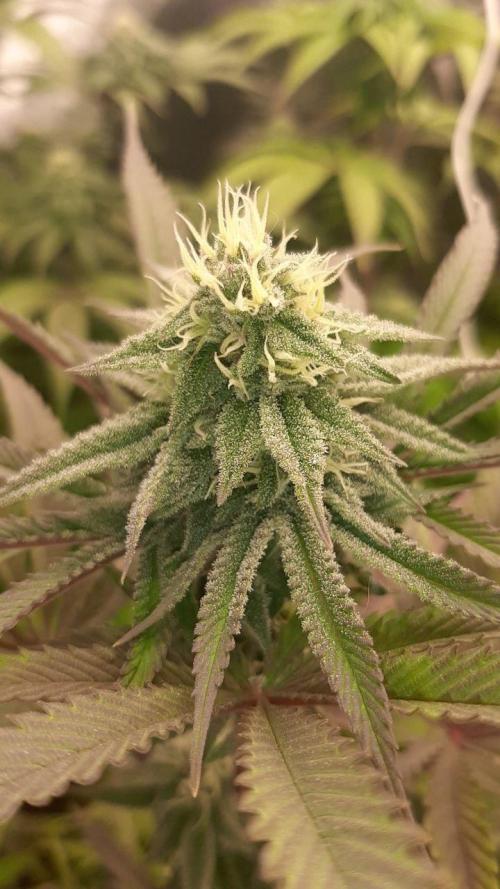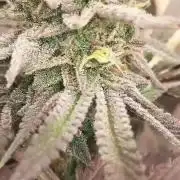The Grow Awards 2026 🏆 








my first indoor greenhouse

Pure Glitter

GMO
CUSTOM REGULAR

Filt
PASSIVE
VENTISOL 95m3
Mix
100% ORGANIC
Indoor
Room Type
SoG
weeks 1, 9
Transplantation
weeks 4
Topping
weeks 6
LST
weeks 7-10
Defoliation
weeks 7-11
clone
weeks 8
12-12
weeks 9-10
7 liters
Pot Size
Start at Harvest
1
Week 1. Vegetation4mo ago
17 hrs
Light Schedule
20 °C
Day Air Temp
6.0
pH
No Smell
Smell
80 %
Air Humidity
19 °C
Solution Temp
3.79 liters
Pot Size
Nutrients 1
Super Soil 100% organic
0.053 mll
THEFROZEN710 These photos represent the first week of my first indoor cycle. I'd like to emphasize that if the GMOs don't appear at the end of the cycle, it's because they're seeds from a flower I purchased without provenance. The other seeds are all from trusted seed banks. The soil is 100% organic. For further information, Terro Super Soil offers a similar recipe, with the addition of various flours and other ingredients to encourage microbial and fungal activity. In the first week, mycelia began to form on the soil surface, indicating good fungal activity. Along with the mineral addition of lime and nit, Tricoderma Hazarium, a beneficial fungus for rooting and root health, was also added. Just 1 ml per week is sufficient for now.
2 likes
comments
Share
Used techniques
SoG
Technique
2
Week 2. Vegetation4mo ago
17 hrs
Light Schedule
22 °C
Day Air Temp
6.3
pH
No Smell
Smell
55 %
Air Humidity
16 °C
Solution Temp
3.79 liters
Pot Size
Nutrients 1
Super Soil 100% organic
0.053 mll
THEFROZEN710 In this second week my humidifier burned out, I spent 2 days with humidity between 40 and 55%, after resolving this issue the plants showed that they were happy with the new humidifier, the only watering done at the beginning of the week (Monday) was prepared with HaifaCalPrime, Nit+CA soluble in water, being a ppm of 200, pH 6.3, and Tricoderma Hazarium, less than 100ml per plant, remembering that the soil is already complete, the focus is to keep the microbiota active with small adjustments and observing the reaction day after day.
2 likes
comments
Share
3
Week 3. Vegetation4mo ago
17 hrs
Light Schedule
24 °C
Day Air Temp
6.3
pH
No Smell
Smell
85 %
Air Humidity
16 °C
Solution Temp
3.79 liters
Pot Size
Nutrients 1
Super Soil 100% organic
0.053 mll
THEFROZEN710 This week, the soil didn't appear to need watering on watering day, so I only watered on Thursday. A solution of just under 400 ppm, pH 6.3, and 2 ml of Tricoderma Hazarium in a 1 L solution, each plant receiving an average of 100 ml. Overall, they showed good results after the humidity returned to ideal levels. This will probably be the last week in the 1 L pots, as the GMO roots are already demanding space. However, I've held off on watering because my focus is on the DNA and Pure Instinto genetics. By the way, Pure Glitter is showing promise. I can smell a faint aroma emanating from the plant at this stage, a characteristic scent of sweet fruit. It's still too early to speculate, but there are distinct sweet notes. The others are odorless and apparently quite healthy!
I found the Bakers' leaf development curious. If you notice the first leaves are stuck together, one tip at a time. Could this be a defect? A genetically inherited leaf mutation? Or just an accident? Curious, isn't it?
If you can leave feedback in the comments, I'll be watching for constructive criticism and advice!
2 likes
comments
Share
4
Week 4. Vegetation4mo ago
18 hrs
Light Schedule
24 °C
Day Air Temp
6.3
pH
No Smell
Smell
80 %
Air Humidity
19 °C
Solution Temp
7.19 liters
Pot Size
60 cm
Lamp Distance
Nutrients 1
Super Soil 100% organic
0.053 mll
THEFROZEN710 This week, I flipped the 1L pots to the 7L pots that are planned as the final pots. I noticed that the 1L pots for the main genetics didn't have air circulation underneath, and perhaps there was a buildup of water, preventing the roots from reaching the bottom of the pot laterally. They only descended centrally. It was clear that the pot flip took a while, which caused a slight blockage in the young plants, but nothing too serious. It was clear that they liked the new space; they were more active the next day. Maybe next time I'll flip the pot much earlier, and maybe even replace the 1L pot.
During this week they received only 1 watering of 400ppm of NitCal, pH 6.3, + Tricoderma Hazarium (5ML), a high dosage of this beneficial fungicide to activate them in the new pot, generally a high dose is not necessary, but it would not harm the roots either, it would just be a waste.
1 like
comments
Share
Used techniques
Transplantation
Technique
5
Week 5. Vegetation4mo ago
18 hrs
Light Schedule
25 °C
Day Air Temp
6.3
pH
No Smell
Smell
75 %
Air Humidity
21 °C
Solution Temp
17 °C
Night Air Temp
7.19 liters
Pot Size
60 cm
Lamp Distance
Nutrients 1
Super Soil 100% organic
0.053 mll
THEFROZEN710 I don't have many records this week because I lost my cell phone, which I used to keep records. Unfortunately, I lost some of it. But the most important thing I managed to recover is here. I believe that during the last watering, because I overdid it with the N, feeling that the soil's N release was slow, as shown in the fan leaves. The plants had a slight Mg deficiency. Since I used the same solution for all the plants, most of them showed this deficiency, but it was corrected soon after with Salamargo, or known in other countries as Epsom salt.
I ended up finding a photo of my soil composition and decided to make it available so everyone can get an idea of the nutrient content the soil can provide, combined with light mineral inputs to maximize genetics.
For this week post transplant, I felt that the plants would accept working at 420ppfd
1 like
comments
Share
6
Week 6. Vegetation4mo ago
18 hrs
Light Schedule
25 °C
Day Air Temp
6.3
pH
Normal
Smell
70 %
Air Humidity
19 °C
Solution Temp
16 °C
Night Air Temp
7.19 liters
Pot Size
60 cm
Lamp Distance
Nutrients 1
Super Soil 100% organic
0.053 mll
THEFROZEN710 It's almost hard to tell I'm in winter; my tent easily hits 26 degrees Celsius. But this week marked my first topping pruning. First of all, I'd like to say that I'm against interfering with a plant's natural growth; I like to respect it! But here I had an unusual situation: since I only have one Pure Glitter pheno, I decided to top it to increase my chances of getting clones of this very fragrant pheno. Every time I touch this plant, it leaves a unique scent on my hands. I'm certainly anxious and very excited for this plant's flowering. I confess that for my first topping, I don't know if I did it correctly, but I can say that this cut hurt as much as my last 10 surgeries.
These photos represent the beginning of the sixth week. Not a single pot appeared to need watering. We continue preparing for the final moments of the season. I was considering removing Bakers, which had problems with the cotyledons, to keep it as a mother plant, but since I switched to a 7L pot, I will take clones from the best pheno and keep at least 1 or 2 Bakers mothers, and 2 or 3 from Pure Glitter, it is very likely that I will do a future SOG with these 2 genetics.
1 like
comments
Share
Used techniques
Topping
Technique
7
Week 7. Vegetation3mo ago
18 hrs
Light Schedule
28 °C
Day Air Temp
6.4
pH
Normal
Smell
63 %
Air Humidity
20 °C
Solution Temp
16 °C
Night Air Temp
7.19 liters
Pot Size
60 cm
Lamp Distance
Nutrients 1
Super Soil 100% organic
0.053 mll
THEFROZEN710 A tough week for some of these girls, unfortunately. I believe it was a bit of an excess of Mg. I felt my soil was having trouble releasing Mg, and I ended up applying a somewhat aggressive treatment to some plants that were showing chlorosis. Perhaps the soil ended up releasing Mg after my mineral application, which burned some of the tips of some leaves. Other plants didn't feel it as much, but I'm happy to note that this slight excess didn't affect them. Two days ago, I watered them with pure water and adjusted the pH to 6.4 only. The next two waterings will be with pure water only. I noticed they started drinking more water than usual.
I'm thinking of placing the Bakers, who had cotyledon problems, as a mother in a different tent. I'd like your opinion. What do you think?
I performed a light defoliation of only the shade leaves, a maximum of 4 fan leaves each. I believe that after a good recovery and removal of some clones, we'll prepare for flowering and perform a more intense defoliation. The smell of each of these girls is already making me anxious, and at the same time worrying because I think they'll smell up the whole block.
Observing the scents, Pure Glitter is the one that has me most anxious so far, a sweet and icy scent at the same time. The Bakers have a sweeter scent, something that reminds me of wine perhaps, or grapes? The GMOs already have a more sour citrus scent. I remember their flowers as if it were yesterday when I pick them up.
2 likes
comments
Share
Used techniques
LST
Technique
Defoliation
Technique
8
Week 8. Vegetation3mo ago
18 hrs
Light Schedule
28 °C
Day Air Temp
6.8
pH
Normal
Smell
60 %
Air Humidity
20 °C
Solution Temp
15 °C
Night Air Temp
7.19 liters
Pot Size
60 cm
Lamp Distance
Nutrients 1
Super Soil 100% organic
0.053 mll
THEFROZEN710 Everything returned to normal with these girls. They recovered from a possible Mg overdose. They were all drinking pure water with a pH of 6.5, gradually increasing it to better absorb certain nutrients in their flora. There was no plan to add any mineral salts. I noticed an excellent response from them with the application of a biostimulant rich in enzymes, amino acids, and some algae and fish flours. It's important to understand that it has no nutritional effect; it merely causes mild, controlled stress and helps the plant metabolize faster and more efficiently. I took the opportunity to take out some clones of the most promising phenos and several Pure Glitter clones. I have the impression that I may have pulled a rare gem compared to other colleagues who received these same genetics and had no results. Many even killed their plants before flowering to save space. So, I've never seen a harvest from this genetics, and it is showing signs of anthocyanins in the veg.
I took a light measurement of the runoff in the pots to understand how they're feeding. A few weeks ago, the overflow showed nutrient accumulation, at 1200 ppm. Currently, it's at 400 ppm. Apparently, they're eating a little faster than the soil is releasing it. Some supplementation in the flora might be possible.
I noticed that in Bakers, some nodes have three flowering points, but this is only in the healthiest ones. Is this a mutation or a genetic trait that expresses itself under ideal conditions? These genetics handle LST well, but I got the impression that they respond better without this training.
Light management was carried out during the week: two waterings with pure water without any additives, some clones were removed, some strategic lists were made to fill gaps in the grow area, and a very light foliar spray was applied to the plants with a diluted biostimulant containing Bacillus. One-fifth of the manufacturer's recommended foliar application dose was used to prevent pests and improve metabolism for flowering. Thus, we conclude the last week of veg. I believe I'll flip them in the next two days while I finish the greenhouse for the clones.
2 likes
comments
Share
Used techniques
Defoliation
Technique
LST
Technique
clone
Technique
9
Week 9. Flowering3mo ago
12 hrs
Light Schedule
28 °C
Day Air Temp
6.8
pH
Normal
Smell
65 %
Air Humidity
22 °C
Solution Temp
13 °C
Night Air Temp
7.19 liters
Pot Size
45 cm
Lamp Distance
Nutrients 1
Super Soil 100% organic
0.053 mll
THEFROZEN710 Everything was going well during the first week of flowering. I waited until I completed 7 days of flowering to record them. They were flipped on September 20th.
The first two days of flowering were difficult because the end of winter reached 35 degrees Celsius inside the tent. Some Bakers showed slight heat stress, the GMOs much less so, and Pure Glitter gave me the impression that she liked high temperatures.
I didn't add any additional nutrition other than the flora biostimulant, Tricoderma, and I did a light superficial foliar spray with Bacillus. I'm thinking of maybe adding 0.2g/L of MKP and pure water after four waterings, with an average pH of 6.8 for all solutions.
I decided to remove two plants from the tent and flower them outdoors. The goal is to explore their genetics and their development in the sun, even avoiding potential overgrowth. What led me to this decision is that at the beginning of this journey, I had a GMO #4 that only veered for three weeks and had a severe sulfur deficiency. It ended up stalling and I almost killed it. I decided to leave it in the sun with just water, and it simply responded very well. Without adding any type of nutrient, it corrected the deficiency and began flowering. The plant showed many trichomes early and shades of purple in the third week of flowering, which may indicate high anthocyanins. I'm very excited for the flowering of these outdoor and indoor plants. The smell of these girls is already infesting the entire house and even spreading outside.
The GMOs I thought were regular, I'm now thinking they might be feminized, as all the seeds I planted have sprouted and are all female. The flower's owner said it's a Mamikos genetic. It's hard to say, but I'm very happy with the smell and development of these plants!
I'm very happy with how everything is going, very excited to see the results. See you next week!
2 likes
comments
Share
Used techniques
Defoliation
Technique
SoG
Technique
LST
Technique
12-12
Technique
10
Week 10. Flowering3mo ago
12 hrs
Light Schedule
30 °C
Day Air Temp
6.8
pH
Normal
Smell
65 %
Air Humidity
22 °C
Solution Temp
13 °C
Night Air Temp
7.19 liters
Pot Size
30 cm
Lamp Distance
Nutrients 1
Super Soil 100% organic
0.053 mll
THEFROZEN710 Everything is going well. The photos represent day 14 of flowering. Nutrition is based solely on pure water, Trichoderma hazianum + Bacillus thuringiensis. BTi was added because I found some gnats flying over the soil of BkD#1 and PureG#1. My yellow trap definitely didn't capture a single adult, so I ended up spraying neem over the clay soil. A few days later, I didn't see any more after watering. I continue to monitor and take preventative measures more closely.
I added KushyCat Flora biostimulants this week, and sprinkled a little Bokashi powder and 1/3 of the recommended dose of liquid Bokashi on top of the soil to ensure they're still releasing nutrients at this crucial stage. In future waterings, I might add a very diluted MKP supplement. Perhaps I'll increase the Trichoderma dose to help the roots metabolize all that P and K, and some other micromolecules that this glorious fungus can help us with.
Watering is being done at 10% of the pot's volume to avoid runoff. Note that in organic soil, a runoff is only to understand how nutrient release is going and whether the plant is actually consuming everything that's produced there. We could also call it leaching, which we don't want very often in this type of soil.
PPFD: 1100
pH: 6.8
rH: 55%
3 likes
comments
Share
Used techniques
LST
Technique
12-12
Technique
Defoliation
Technique
11
Week 11. Flowering2mo ago
12 hrs
Light Schedule
27 °C
Day Air Temp
6.8
pH
Normal
Smell
55 %
Air Humidity
22 °C
Solution Temp
15 °C
Night Air Temp
7.19 liters
Pot Size
30 cm
Lamp Distance
Nutrients 1
Super Soil 100% organic
0.053 mll
THEFROZEN710 This week, the leaves of the Pure and GMO plants started turning purple. Baker's only showed purple coloration on the edges. The girls showed slight defoliation, and I've reduced the frequency of watering. I'm having a problem with gnat fungi. I believe my powerful BTi bacteria have no effect on them. I might have to resort to hydrogen peroxide, but my soil is alive and organic. I applied neem oil to the pots, tents, and the surface of the soil to try to repel the adults. I thought I'd gotten rid of them last week, but I was wrong. I also noticed very high humidity at night. I'll have to increase the exhaustion, but their scent is excellent and strong. I'm looking forward to seeing every detail in the coming weeks!
See you soon!
3 likes
2 comments
Share
Used techniques
Defoliation
Technique
12
Week 12. Flowering2mo ago
12 hrs
Light Schedule
30 °C
Day Air Temp
6.8
pH
Normal
Smell
47 %
Air Humidity
22 °C
Solution Temp
15 °C
Night Air Temp
7.19 liters
Pot Size
20 cm
Lamp Distance
Nutrients 1
Super Soil 100% organic
0.053 mll
THEFROZEN710 Everything was going well this week, except for two days of electrical issues, leaving the power out. Some plants showed slight signs of stress in their pistils, but apparently nothing serious. Everything returned to normal in the following days, and not a single plant was stunted.
I didn't see a single gnat again. The BTi proved very effective against their initial stage, and not a single larva developed into a fly.
4 likes
comments
Share
13
Week 13. Flowering2mo ago
12 hrs
Light Schedule
27 °C
Day Air Temp
6.8
pH
Normal
Smell
40 %
Air Humidity
22 °C
Solution Temp
17 °C
Night Air Temp
7.19 liters
Pot Size
15 cm
Lamp Distance
Nutrients 1
Super Soil 100% organic
0.053 mll
THEFROZEN710 I made a few adjustments this week. I simply increased the girls' diet a bit with mineral supplements in addition to the organic soil nutrients. I increased the PK and added some NitCal and a little Mg to nourish the soil until the end of the flowering stage. I added some Bokashi to the surface of the soil along with Biostimulant for Flora, rich in amino acids, sugars, molasses, and more. I added a little BTi to ensure there were no gnat eggs left and Trichoderma to prevent any other unwanted soil fungus. They received two nutritious waterings during the week, possibly the last or second-to-last one. We'll see how they react throughout this journey. Despite everything, I'm still very happy with how everything is going.
4 likes
comments
Share
14
Week 14. Flowering2mo ago
12 hrs
Light Schedule
29 °C
Day Air Temp
6.8
pH
Strong
Smell
45 %
Air Humidity
22 °C
Solution Temp
14 °C
Night Air Temp
7.19 liters
Pot Size
15 cm
Lamp Distance
Nutrients 1
Super Soil 100% organic
0.053 mll
THEFROZEN710 Some problems have appeared with my beloved plants. From my research, I have poor air circulation inside my grow tent, which wasn't surprising. When I set everything up somewhat haphazardly, I knew I would need to fix it. I confess I'm dissatisfied with this week; some plants are stressed, nothing too serious, but I noticed a slowdown in 3 Baker's phenotypes, some gnats have returned, another insect I've never seen before has appeared, and I'm somewhat short on resources to deal with it. I also had a serious problem with the electricity, forcing me to completely improvise the electrical system and exhaust fan to work without a ventilator. Anyway, enough bad news. I'm still in my first run, but I'm learning from my mistakes!
2 likes
comments
Share
15
Week 15. Flowering1mo ago
12 hrs
Light Schedule
-3 °C
Day Air Temp
6.8
pH
Strong
Smell
55 %
Air Humidity
-6 °C
Solution Temp
-9 °C
Night Air Temp
1.89 liters
Pot Size
15 cm
Lamp Distance
Nutrients 1
Super Soil 100% organic
0.053 mll
THEFROZEN710 During this week, in addition to gnats and hydrophobic soil, I faced high humidity at night and poor ventilation inside the grow tent. I felt this delayed the development of the sprouts. I used only pure water for watering, and even then, I did it in small volumes (50 to 100ml) several times to combat poor nutrient absorption on top of the pot due to the hydrophobic soil. I also applied Bacillus to control the gnats in the larval stage. I noticed that my traps had fewer each day, but it's difficult to completely eliminate these little demons.
3 likes
comments
Share
16
Week 16. Flowering1mo ago
12 hrs
Light Schedule
28 °C
Day Air Temp
6.8
pH
Strong
Smell
55 %
Air Humidity
19 °C
Solution Temp
16 °C
Night Air Temp
7.19 liters
Pot Size
15 cm
Lamp Distance
Nutrients 1
Super Soil 100% organic
0.053 mll
THEFROZEN710 A week full of adversities, lots of mold on the main buds. I increased ventilation and air exchange, but unfortunately it wasn't enough. I lost the biggest top of Baker's #1 due to mold, and to prevent the harvest and reduce plant transpiration (since I couldn't lower the humidity), I decided to remove some buds from most of the plants at the end of week 7. I left the most promising ones and those where I didn't see mold. I left the tent open every day and night to reduce humidity, but I still had problems with some moldy buds at the end of week 8. But it's all good, everything has been a learning experience so far. I've made good friends and continue to learn more each day. I have some clones that are revegetating and maybe I'll bring a new project.
Thank you to everyone who dedicated some of their time to this diary. I express my gratitude, and if it helped you in any way, leave a comment! See you next time, I'll still bring photos of the fully cured buds.
4 likes
comments
Share
17
Week 17. Harvest11d ago
Happy Harvest Day!

9/10
Rated
Strong cookie scent, but it's still possible to smell something different that I believe is reminiscent of the Sorbet line. From 5 seeds, I got 3 structurally different phenotypes, all very similar in color but different buds, the terpene profile and scent are the same in all, both indoors and outdoors. I won't give it a 10 yet because I haven't been able to see the maximum potential of the genetics. I had many problems at the end of flowering due to my management, which harmed my harvest and even caused some plants to herm. But due to my lack of attention and some personal problems, we will certainly see it again, and even better!
Show more
Translate
Spent 115 days
Ger Veg Flo Har
72.5 g
Bud wet weight per plant
4
Plants
0.64 m²
Grow Room size
Hard
Difficulty
Day air temperature
Air humidity
PH
Light schedule
Solution temperature
Night air temperature
Pot size
Lamp distance
THEFROZEN710 I harvested these indoor plants at 62 days old. I harvested a little early due to some electrical problems and mold that started; to preserve the harvest, I brought it forward. During curing, I didn't have much mold incidence, apart from the buds that showed signs of growth inside the grow tent. The cookie flavor is very present and characteristic; I sense a touch of the sorbet line. The smell of the veg is very good and strong. I have some clones of the best phenotypes, and I will certainly have them again. Relaxing effects and good for focus, balance, sustained concentration, and body relaxation.
2 likes
comments
Share
Equipment Reviews
17
Week 17. Harvest11d ago
Happy Harvest Day!

10/10
Rated
What can I say about this strain... It's simply one of the best I've ever tried. Unfortunately, I haven't managed to make hashish yet, but I'm very satisfied with the flavor. It's clearly a sweet plant, reminiscent of something fruity, like blueberries or grapes, something sweet but not cloying, and a high level of terpene gas. Every time I've smoked this plant, I've had the sensation that it makes me lose my balance. I usually ride a motorcycle a lot, and I notice that when I smoke it, I can't maintain my balance very well. Strange, but very flavorful and fragrant. I don't know if I've managed to get any clones to root, but I'm hoping so!
Show more
Translate
Spent 115 days
Ger Veg Flo Har
90 g
Bud wet weight per plant
1
Plants
0.64 m²
Grow Room size
Easy
Difficulty
Day air temperature
Air humidity
PH
Light schedule
Solution temperature
Night air temperature
Pot size
Lamp distance
THEFROZEN710 A light berry scent combined with a dense taste of Gas, truly a very flavorful strain and the one that had the least complicated structure to care for. Unfortunately, I couldn't even manage to clone it successfully, but I will certainly have it again.
I hope to see her again.
1 like
comments
Share
Equipment Reviews
17
Week 17. Harvest11d ago
Happy Harvest Day!

10/10
Rated
I wasn't expecting anything from these seeds that came from some hermaphrodite flowers from a fellow grower. I got 3 different phenotypes: one with completely purple flowers and purple leaves, two others with greenish leaves (one with purple flowers and the other with green flowers on the outside and purple inside). I've never seen so much resin in a plant; the taste is very true to the smell. This plant is definitely the most potent and has the strongest taste—a pungent flavor, reminiscent of garlic, something close to a more citrusy onion, and at the same time a subtle sweet touch. Unfortunately, I didn't clone them because I wasn't expecting anything, but I'll try to get some more seeds from them.
Show more
Translate
Spent 115 days
Ger Veg Flo Har
60 g
Bud wet weight per plant
2
Plants
0.64 m²
Grow Room size
Easy
Difficulty
Day air temperature
Air humidity
PH
Light schedule
Solution temperature
Night air temperature
Pot size
Lamp distance
THEFROZEN710 This phenotype #4 was removed from the grow tent after 2 weeks of veg due to a deficiency I'd never seen before. From what I've researched, it could be sulfur; it didn't seem to be a disease, but it produced excessive resin.
2 likes
comments
Share
Equipment Reviews

the end.
Enjoying this diary? Follow for more updates!
Prefer the old Diary view?
Go back to the old Diary view



